PHS Philadelphia Flower Show Returns Indoors
By Tom Castronovo Executive Editor/Publisher Gardener News
The 2023 Philadelphia Flower Show will take place indoors on March 4-12 in the Pennsylvania Convention Center, with floral and

garden displays front and center. This year’s Show will feature an abundance of displays by the world’s premier floral, garden,
horticultural and landscape designers.


This year’s theme is: “The Garden Electric!” That spark of joy that comes while
giving or receiving flowers. There will be even more for guests to do and see this year. Get up close with hundreds of (Cont. on Page 10)
March 2023 No. 239 Read the Gardener News Online at GardenerNews.com
Proudly Serving the Agricultural, Gardening, Landscaping & Nursery Communities TAKE ONE TAKE ONE
Gardener News Gardener News
PHS Philadelphia Flower Show/Image
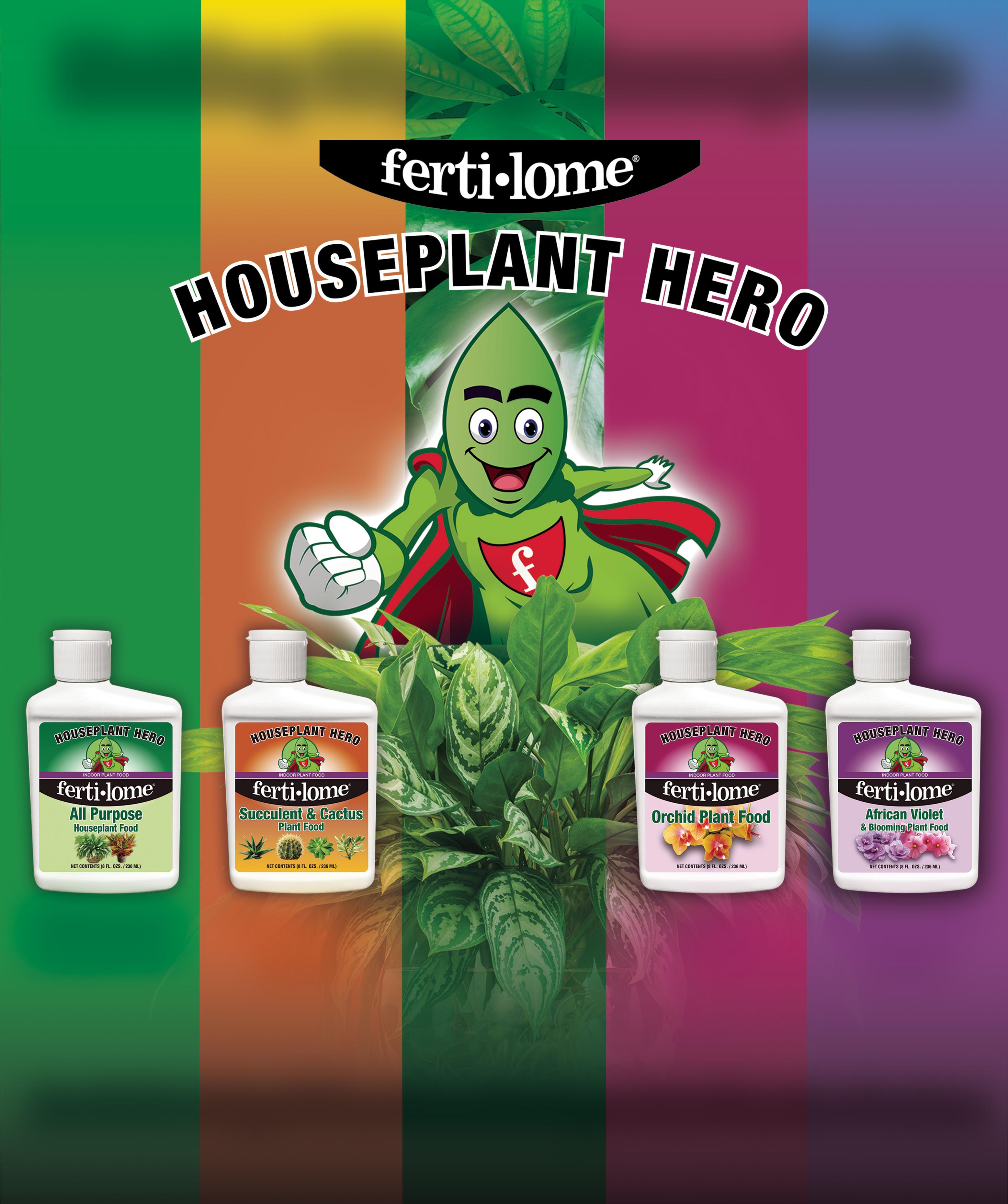

GardenerNews.com 2 March 2023 All Purpose Houseplant Food Succulent & Cactus Plant Food Orchid Plant Food African Violet & Blooming Plant Food
Let me start by explaining my meaning of a trade show.
A trade show is an exhibition organized by associations and/ or organizations, in a specific industry, with vendors related to that industry, showcasing and demonstrating their latest products and services. The shows allow attendees to meet with industry partners, and learn about market trends and opportunities. They also look to discover new products and services. Some shows offer equipment demonstrations. A trade show is often referred to as business-to-business (B2B) event attended by businesses in a specific market.
With that said, I have attended some of the best trade shows in the last two months that several different industries have offered. There are a few more in the next few months that I’m planning on attending.
The first show was the MidAtlantic Nursery Trade Show (MANTS). It was held in the Baltimore Convention Center in Maryland. The show welcomed more than 11,000 attendees, including exhibitors, from January 11 through January 13, 2023.
A sold-out trade show floor showcased more than 900 exhibiting companies in more than 1,530 booths. Attendees from 42 states and 14 foreign countries spent three days connecting with colleagues, discovering new products, and seeking new plants, nursery stock, landscape and garden items, heavy and light-duty equipment, tools, outdoor living essentials, and other allied industry products.
One of the most interesting items I came across was a lightweight orange, highimpact poly mulch fork that is reinforced with fiberglass at the A.M. Leonard booth, a leader in the horticultural and tool supply industry.
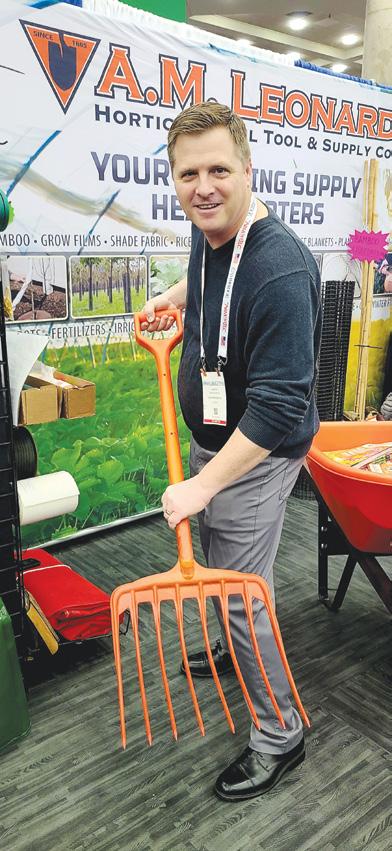
I was told by Andrew Xavier from the A.M. Leonard Company that this fork handles nearly any task, from a landscape cleanup to handling compost. I thought about it as a mulching fork because it looks like the narrow tines can easily scoop and spread mulch with ease. It also has a large grip to accommodate gloved hands. The orange color will make it easy to find anywhere. I can’t wait to try out my new fork in the spring.
The next MANTS is scheduled for January 10 through
Around The Garden
By Tom Castronovo Gardener News
I had the chance to reconnect with King Whetstone, the regional director of USDA’s National Agricultural Statistics Service. We spoke about the Census of Agriculture.
The Convention has been jointly sponsored by the State Horticultural Association of Pennsylvania, the Pennsylvania Vegetable Growers Association, the Maryland State Horticultural Society, and the New Jersey State Horticultural Society for the past 45 years, making the 2023 Convention the 46th meeting. The Virginia State Horticultural Society joined the Convention in 2014. The Convention has become one of the premier grower meetings in the Northeast.
The next Convention and Trade Show is scheduled for January 30 through February 1, 2024.
Proceeds of the show help to expand the NJLCA’s outreach, educational programs, legislative voice, and membership services throughout the year.
The next show is scheduled for February 28, 2024.
I can’t wait to visit the PHS Philadelphia Flower Show at the Philadelphia Convention Center March 4 through March 12, 2023. The Show is the nation’s largest and longest-running horticultural event and features stunning displays by the world’s premier floral and landscape designers. The Show promises to introduce diverse and sustainable plant varieties as well as garden and design concepts. In addition to acres of garden displays, the Show will host esteemed competitions in horticulture and artistic floral arranging, gardening presentations and demonstrations, and special events.
The next show on my radar will be the NJ Contractors Showcase Expo (NJCSE), an outdoor show on August 2, 2023 at the County College of Morris in Randolph, NJ
January 12, 2024.
The second show I attended was the Mid-Atlantic Fruit and Vegetable Convention and Trade Show in Hershey, Pennsylvania on Wednesday, February 1, 2023.
The educational program featured three days of six to nine concurrent sessions. In addition, there was a full day of practical production programming presented in Spanish for farm and orchard workers. Penn State Extension, University of Maryland Extension, Rutgers Cooperative Extension, and Virginia Cooperative Extension all assisted in organizing the educational sessions.
There were over 160 exhibitors filling 231 booths. The show specialized in horticultural equipment, farm market merchandise, and packaging, along with information on the latest seed varieties, fruit varieties, pesticides and other supplies and services for the commercial grower.
On February 8 I attended the Vegetable Growers Association (VGA) of New Jersey Trade Show at Harrah’s Resort and Waterfront Conference Center in Atlantic City, NJ. I also attended the annual New Jersey State Agricultural Convention, which was held at the same location.
The trade show and VGA educational sessions opened on Tuesday, February 7. The show featured exhibits and displays from many of the industry’s suppliers and business associates. In addition, a wide variety of educational sessions on topics ranging from growing crops to food safety, and the latest ideas in agricultural practices were offered. The 2023 New Jersey State Agricultural Convention opened with its regular business session on Wednesday, February 8 and continued on Thursday, February 9. The meetings focused on developing and setting a policy agenda for the industry over the coming year through the resolutions process.
One part of the Annual State Agricultural Convention each year is recognizing various producers for their accomplishments over the past year. On Wednesday, February 8 the awards given out included
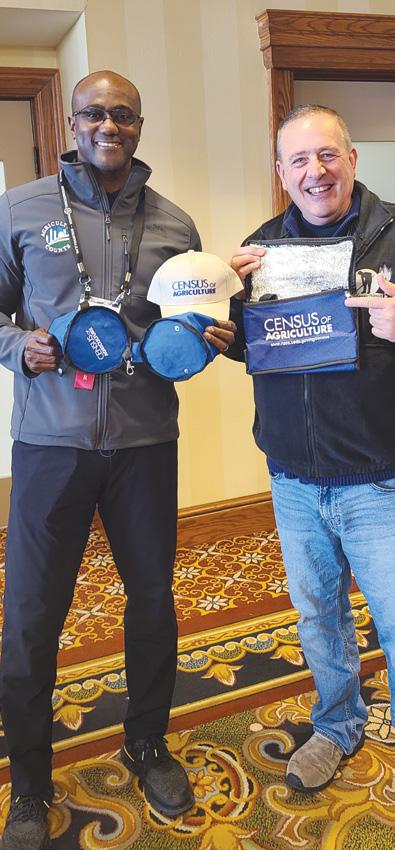
the New Jersey Outstanding Young Farmer Award to Michael Brooks, Vegetable Grower of the Year to Jimmy Abma, the Phillip Alampi Industry Marketing Award to Chef Mark Smith, the Tony Russo Farmers Marketing Award to the West Community Farmers’ Market, and the Neil Robson Farmers Against Hunger Award to Roger Kumpel.
On March 1, 2023 I will be attending the New Jersey Landscape Contractors Association’s (NJLCA) Landscape New Jersey Trade Show and Conference at the Meadowlands Exposition Center in Secaucus.
Landscape New Jersey is celebrating over 45 years of providing the industry with a one-day indoor show, combining the best in education, with the newest and most innovative equipment, materials and outdoor living and green industry products and services.
The NJCSE is NJLCA’s outdoor show, in its third year, providing owners, supervisory and decision makers with the ability to not only see, but test drive new equipment, set eyes on the newest developments in materials and try out the latest technology for the outdoor living and green industry. The NJCSE Trade Show supports the NJLCA Educational Fund, which provides scholarships to students of higher education in the outdoor living and green industries. I can’t wait to run a bobcat mini excavator.
PS. Happy Birthday and Happy St. Patrick’s Day, Mom!
Editor’s Note: Tom Castronovo is executive editor and publisher of Gardener News
Tom’s lifelong interest in gardening and passion for agriculture, environmental stewardship, gardening and landscaping, led to the founding of the Gardener News, which germinated in April 2003 and continues to bloom today. He is also dedicated to providing inspiration, and education to the agricultural, gardening, landscaping and nursery communities through this newspaper and GardenerNews.com.

GardenerNews.com March 2023 3
Showtime!
Tom Castronovo/Photo Andrew Xavier from the A.M. Leonard Company with the newly designed Leonard Poly Fork.
USDA NASS/Photo Tom Castronovo, right, and King Whetstone, Regional Director of USDA’s National Agricultural Statistics Service.
The story of hemp in New Jersey has quite a past. However, it’s a history with which few are familiar because of the ban on growing hemp enacted decades ago.
Cultivating hemp was outlawed by the Marihuana (sic) Act of 1937. Two main factors combined to spur Congress to pass that Act.
One was increasing competition from cotton, timber, and synthetic plastics to take hemp’s place as raw ingredients in items traditionally made from hemp.
Another was anti-cannabis fervor surrounding hemp’s more potent cousin, marijuana, as epitomized by the movie “Reefer Madness,” depicting people acting with moral abandon after a few puffs on a marijuana cigarette.
Before that time of public panic, and in fact all the way back to Colonial days, hemp was an important crop in the Garden State. Going back even further, wild hemp grew here and native populations made fiber by shredding, twisting it, and using dyes from plant materials to weave fabric from hemp.
As reported (including insensitive descriptions of various ethnic and indigenous populations) by the Department of Agriculture in 1943, “The Swedes in West Jersey found wild, or Indian Hemp.
Try as we must, there will always be more plants than a dedicated gardener can possibly learn in a lifetime. Of course, when you consider all the varied environments found worldwide and the diversity of plants that have resulted, it is certainly understandable!
The challenge is further complicated by spring ephemerals whose lifecycle dictates a 9-month period of dormancy following flowering and seed set. Many spring ephemerals fall into obscurity as a result, including the beautiful golden-yellow blooming Adonis amurensis, or Pheasant Eye.
Adonis is a member of the Buttercup Family, or Ranunculaceae with 20-30 species found throughout Europe, North Africa and Asia. The genus was originally named in 1753 by Carl Linnaeus (1707-1778). The species he studied and named was Adonis annua, which is noted for its blood red flowers that reminded Linnaeus of the mythical figure Adonis. According to Greek mythology, Adonis was the handsome and mortal lover of the goddess Aphrodite. Despite his prowess as a mighty hunter, he was fatally gored by a wild
NJ Dept. of Agriculture
By Douglas H. Fisher Secretary of Agriculture
Hemp in the Garden State
It grew on old grain grounds, in the woods, on hills, and in high glades. The fiber was used by Indians to make ropes….New Jersey being a maritime province needed ropes for her naval stores…large plantings of hemp were made between Trenton and Newark.”
There is much made historically of George Washington growing hemp at Mount Vernon. Though initially interested in growing it as a crop to be sold, Washington instead decided to grow it for use on his plantation, making rope, thread for sacks and canvas, and for the seine nets used at his fisheries.
Hemp is simply amazing in its capacity to restore and rebuild much of what has been lost to humankind’s assault on Earth’s natural balance.
According to Rodale Institute: hemp absorbs four times more
carbon dioxide than trees do; hemp remediates the soil; can replenish topsoil aeration in crop rotations; is a drought-resistant weed that requires no pesticides or herbicides; is fast-growing, providing four harvests a year; is a crop for which there is little to no waste; and can be grown almost anywhere.
Now the best part. Hemp has almost limitless beneficial uses, although everyone seems focused on the therapeutic effects of the flower and seeds in what is known as “flower hemp,” the kind primarily grown to be turned into CBD health products.
However, if we look back, we discover all the other ways that “fiber hemp” was ubiquitously used for countless products. That’s when we learn how much more we can know about hemp and how its seeds, leaves, stems, and roots can
each be put to good use.
Hemp is stronger and more durable than cotton, and requires half the water and land to grow. Hemp is an astoundingly strong building material. Hemp as food is a complete protein and contains all nine essential amino acids
The list of its uses is almost endless: body care, paper products, bioplastics, biofuel, and on.
In fact, in 1937, Ford produced a car listed as grown from the soil. The “Hemp car” ran entirely on hemp ethanol and the body was constructed from hemp plastic, which Ford’s engineers stated was 10 times stronger than steel.
NJDA’s approach to hemp as a potentially profitable crop for farmers has remained consistent. While others are growing for the immediate market – CBD products – the longer-term future in our eyes
Morris County Park Commission
By Bruce Crawford Horticultural Manager
Adonis – No Mere Mortal of a Flower!
bore. It was the resemblance of his spilt blood to the flower color that inspired Linnaeus in naming the genus. The common name of Pheasant Eye is also inspired by the red flowers and how they loosely resemble the red eyes of a Pheasant.
Bearing yellow rather than red flowers, Adonis amurensis is native to China and Eastern Russia, as well as Korea and Northern Japan. The species epithet honors the Amur River, separating Eastern Russia from China and marks the region where the species was initially found by the German naturalist Gustav Ferdinand Richard Johannes von Radde (1831-1903). In cooperation with the German botanist and horticulturist Eduard August von Regel (1815-1892), they described and published Adonis amurensis in 1861. Regel served as the
Director of the Russian Imperial Botanic Garden and although he did not travel abroad, he named over 3,000 plants sent to the Botanic Garden by collectors.
Native to frigid regions, it is not surprising that Adonis amurensis initiates growth and flowers with snow still covering the March Garden. When first emerging, the dense tufts of highly dissected foliage are dark bronze in color, a result of protective carotenoids. The flower buds are initially difficult to see since the protective outer calyx covering the flower bud is streaked with dark bronze bands. The outer surface of the petals is also marked with similar, albeit thinner bronze bands.
As the flowers open, the deep color of the foliage provides an attractive backdrop to the bright golden-yellow color of the flower. Sadly, the contrast is short lived
is in growing for the nearly endless industrial uses mentioned here.
Working with institutions like Rutgers and Stockton universities, NJDA aims to create close-in markets for hemp growers selling to companies who make these kinds of non-CBD products.
New Jersey has been working to be a leader in those long-term goals and, through our Division of Plant Industry, we are encouraging more and more growers to become involved, with an eye toward the economic opportunities and environmental benefits that industrial hemp can bring.
Editor’s Note: Douglas H. Fisher is New Jersey’s Secretary of Agriculture. He is the department’s executive officer, secretary to the State Board of Agriculture and a member of the Governor’s cabinet. Secretary Fisher fulfills executive, management and administrative duties prescribed by law, executive order or gubernatorial direction. He can be reached at 609.292.3976. For more info, please visit: http:// www.state.nj.us/agriculture
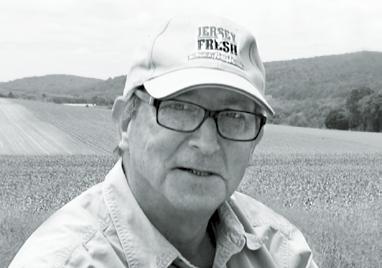
as the foliage transitions to deep green and ultimately light green with warmer temperatures.
As the flowers open, the petals quickly elongate beyond the 8 or 9 basal sepals, reaching a showy 1½-2” in diameter when fully open. Like many early blooming plants, the flowers close during cold or inclement weather and are pollinated by bees, flies and beetles. Based upon the individual plant, the number of petals vary from fewer than 20 to over 30. The petals surround a pronounced ring of well over 100 anthers, which are tipped by flattened, ¼-⅜” long anthers. The flowers continue to open for over a month. After blooming, small light green and globose seed heads develop, although I have never noticed seedlings.
In the wild, the plants are found on exposed, stony and
grassy slopes or beneath the scrubby growth of weatherbeaten shrubs. In the garden, plants grow well in morning sun or the cooler locations provided by filtered shade. Ideally, soils should be well-drained yet rich in organic matter with a shredded leaf or fine gravel mulch. Spring ephemerals will always be difficult to find and add to our gardens due to their rather limited period of flower or foliar interest. Still, these plants are worth the effort to find. Adonis amurensis adds a great touch of color while the snow is retreating, yet long before most spring bloomers have awakened. Its obvious indifference to late winter’s chill, affiliation with celestial personalities, and boldly attractive flowers make this no mere mortal of a winter bloomer!
Editor’s Note: Bruce Crawford is a lover of plants since birth, is the Manager of Horticulture for the Morris County Parks Commission, and a Past President of the Garden State Gardens Consortium. He can be reached at BCrawford@ morrisparks.net

GardenerNews.com 4 March 2023
Support NJ Agriculture
JERSEY GROWN Nursery Stock
JERSEY GROWN Sunflower Birdseed


JERSEY GROWN Firewood
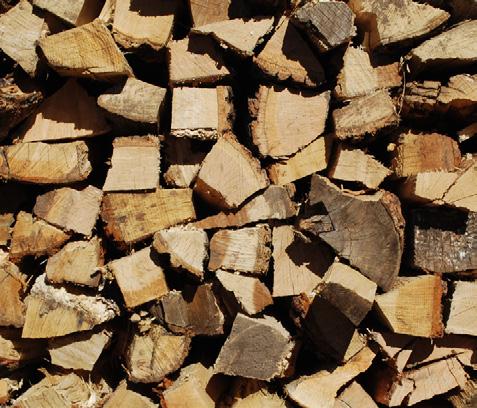

JERSEY GROWN Annuals & Perennials








for trees, flowers quality, and Garden soil
shopping for GROWN know the trees, and flowers for quality, pest free, and the Garden climate and soil
When you’re shopping for JERSEY GROWN nursery stock, you know the trees, shrubs, plants and flowers checked for quality, disease, are pest free, and accustomed to the Garden State’s climate and soil conditions.
Made With JERSEY GROWN Wood Birdhouses & Bird Feeders


Governor
Secretary of Agriculture Douglas H. Fisher
jerseygrown.nj.gov
Governor
Phil Murphy
Secretary of Agriculture
Douglas H. Fisher
jerseygrown.nj.gov
March 2023 5
Rutgers Outreach
Grape and Wine Science Certificate Program
July 24 - August 18, 2023 | 9:00am – 4:00pm EDT
Monday-Friday | New Brunswick, NJ
Prepare for a position in this flourishing industry by gaining foundational knowledge from experts in three major areas of grape and wine science:
Grape growing and vineyard management
Wine making
Business operations
Program Features:
Four weeks of classroom instruction, including hands-on workshops
Four-week paid winery internship
*Participants must be 21 or older and have college-level training training in science or a related field
Learn More and Apply Today!
Atlantic County
Phone: 609-625-0056
Bergen County
Phone: 201-336-6780

Burlington County
Phone: 609-265-5050
Camden County
Phone: 856 216 7130
Cape May County
Phone: 609-465-5115
Cumberland County
Phone: 856-451-2800
Essex County
Phone: 973-228-2210
Gloucester County
Phone: 856-224-8040
Hudson County
Phone: 201-915-1399

Hunterdon County
Phone: 908-788-1339
Mercer County
Phone: 609-989-6830
Middlesex County
Phone: 732-398-5260
Monmouth County
Phone: 732-431-7260
Morris County
Phone: 973-285-8300
Ocean County
Phone:732-349-1246
Passaic County Phone: 973-305-5740
Salem County
Phone: 856-769-0090
Somerset County
Phone: 908-526-6293
Sussex County
Phone: 973-948-3040
Union County Phone: 908-654-9854
Warren County Phone: 908-475-6505
Provided by Brian Schilling Director
Annie’s Project: Serving New Jersey Women Farmers
Rutgers Cooperative Extension (RCE) conducted its six-week online training course, “Annie Goes Online: Risk Management On Your Kitchen Table,” from January 11 through March 1 via Zoom. This 2023 course is part of RCE’s Annie’s Project New Jersey, which was launched in 2011, and is designed to educate and train new, aspiring, and current farm women on risk management strategies and provide tools for successful business management.
The 2023 course began with an insightful session on transition and managing marketing, financial, and human resource risks delivered by keynote speaker, Dr. Wenfei Uva, co-owner of Seaberry Farm, a 36-acre specialty fruit and flower farm in Federalsburg, Maryland. Course offerings are based on work supported by USDA National Institute of Food and Agriculture and scholarships to help defray registration costs were provided by Farm Credit East.
A risk management educational program for women farmers that began in the Midwest, Annie’s Project spread throughout the U.S. It was adapted to the needs of New Jersey, the most densely populated state in the U.S. with over 92% of its population residing within urbanized areas.
Annie’s Project New Jersey, led by RCE since 2011, evolved out of two focus group meetings with women farmers to address specific needs they identified as facing agriculturalists in New Jersey, like higher land and labor costs and more regulations than other states but a higher percentage of high-income consumers who live near its farms. These sessions drew particular interest among female producers in or near urban areas, who tend to have less experience than other farmers and would therefore benefit from farm and risk management training.
The curriculum, delivered in-person until the COVID-19 pandemic, covers the five areas of farm risk: Production, Marketing, Financial, Legal, and Human. It also covers topics specific to urban farming, which include short-term leases, soil quality and contaminants (lead and other heavy metals), access to land, capital and resources, identifying water resources, right-to-farm issues, climate change impacts, food safety issues, and hydroponic farming as a solution to the challenges of soil contamination and water availability.
In addition to helping participants create a business plan, the New Jersey-specific program focuses heavily on marketing topics, including using social media for marketing and business development, and employs social media tools to assist in networking during and after the educational sessions.
To celebrate its 10th anniversary, RCE organized a free, online workshop, “Annie’s Project New Jersey: 10 Years of Empowering New Jersey Farmers,” in November 2021.

The workshop, whose free offering and online format allowed for broader attendance, identified marketing techniques for maintaining new customers, provided risk management strategies, and offered the farmers an opportunity to discuss their challenges and successes during the pandemic with their peers. Dr. Bridget Behe from Michigan State University gave the keynote address on how to keep new customers acquired during the pandemic. Other presentations featured experts on farm practices and the five areas of farm risks. Three breakout sessions on Succession Planning, Marketing, and Crop Production, and an allwomen grower panel on pandemic-related business risk stories rounded out the workshop. The initial feedback was incredibly positive.
To measure the impact of the program, 10 participants were included in a six-month follow-up survey. Respondents indicated they used at least one of the following production strategies on their farm or have started using them as a result of attending the production break-out sessions. Examples of new practices included using municipal leaf compost on farm fields, composting food waste, planting cover crops, using grass clippings as a mulch/fertilizer, developing a farm site plan, incorporating livestock to benefit with crop production, and using companion plantings.
Respondents shared that the most useful tips from the grower panel were guidance on implementing pandemic protocols, becoming a one-stop shopping destination, participating in farmers’ markets, best practices in supporting employee interaction with customers during the pandemic, and how to establish a community supported agriculture (CSA) program. In addition, respondents indicated that the following strategies were important to bringing and maintaining new customers to their business since the pandemic began: offering contactless payment and pick-up, offering delivery service, and using online advertising. Additionally, they engaged with financial and legal advisors, and reviewed their personal medical insurance coverage.
In addition to providing educational training on the essentials of preparing a business plan, considered a vital roadmap to success for any business, RCE’s Annie’s Project New Jersey provides significant networking opportunities for women farmers among their peers and other agricultural professionals. The program was a featured success story by the Northeast Extension Risk Management Education Center website. In 2014, the project garnered the RCE Team Award, which recognizes outstanding collaborative efforts and accomplishments in planning, implementing, evaluating, and marketing an RCE program at the county and/or state level.
GardenerNews.com 6 March 2023 RUTGERS NJAES/RCE
Director’s Desk
From the
Editor’s Note: This month’s contribution was written by Robin Brumfield, professor and RCE specialist in farm management, Department of Agricultural, Food and Resource Economics.
Cooperative Extension Phone Directory
Rutgers
go.rutgers.edu/grape-wine
LAND-GRANT UNIVERSITY NEWS
Excellence Awards Given at Rutgers Cooperative Extension Annual Conference 2023
The Annual Conference brings more than 300 Rutgers Cooperative Extension (RCE) faculty and staff together to network, engage in professional development, exchange ideas for programming and research collaboration, and share best practices for service excellence in the delivery of research-based educational programming. The two-day program was held virtually on December 14, 2022 and in person at the Douglass Student Center on December 15, 2022. The following awards were presented during the conference.
Wilbur M. Runk Award
This annual award supported by the Wilbur M. Runk Endowment provides monetary support to one or more graduate students enrolled in a graduate program at the School of Environmental and Biological Sciences, Rutgers University, and mentored (as major advisor) by any faculty member with an Extension Specialist appointment.
Recipient: Katarzyna Madalinska; Faculty Advisor: Anne Nielson
“Kasia” Madalinska is an Entomology Ph.D. candidate in Anne Nielsen’s laboratory. Her research focuses on the phenology and interactions with host plants of the invasive spotted lanternfly (SLF) with an emphasis on the impacts on NJ vineyards. Research findings to date have been published in one peer-reviewed journal (Frontiers in Insect Science) with a second regional study under review (Journal of Economic Entomology). Kasia’s research has helped to develop biosurveillance methods for spotted lanternfly and she has worked closely with four New Jersey vineyards during her phenology monitoring. In cooperation with Nielsen, she provided growers with up-to-date extension information on SLF biology and management.
Mary Jane Willis Diversity, Equity, and Inclusion Award
The purpose of the Mary Jane Willis Diversity, Equity, and Inclusion Award is to recognize outstanding efforts and accomplishments in achieving and sustaining diversity, equity, and inclusion in Extension organizations, programs, and audiences.
Recipient: Sharon Kinsey, 4-H Youth Development
Advancing English Language Learners Road to Success – the Camden County 4-H/Rowan Upward Bound Program Partnership. The program supports the life skill development of first-generation college-bound students who are also English Language Learners and has been meeting the call to expand the Extension audience and work with underserved, at-risk youth for more than a decade. The program provides students with an abundance of high-quality, high-context educational options from STEM to healthy living and leadership development.
Specialist of the Year
The Specialist of the Year Award is determined with input from county agents across the three Rutgers Cooperative Extension Departments.
Recipient: David Robinson, Climatology
Dr. David Robinson, Distinguished Professor in the Department of Geography, serves as the New Jersey State Climatologist. Dr. Robinson is a recognized and highly sought expert on the state’s weather and climatic issues. In presenting the award, RCE Director Brian Schilling recognized Dr. Robinson as not only a highly regarded academician, but also for his well-earned reputation as a collegial and accessible faculty member who works to advance the generation and dissemination of information relied upon by countless New Jersey stakeholders.
Best of Best (Team Award)
The RCE Best of the Best award is an annual recognition of a multi-departmental cooperative extension team for its efforts to develop and deliver a program with documented and measurable impacts within a service area.
Recipients: Michele Bakacs, Sal Mangiafico, Amy Rowe, Steve Yergeau, Doug Zemeckis.
This award recognizes the team’s outstanding collaborative efforts and accomplishments in planning, implementing, evaluating, and marketing the Earth Day Every Day program at both the county and state levels. The program has extended information and education toa large number of New Jerseyans on actions they can take to protect the environment.
RCE Awards of Excellence
Rutgers Cooperative Extension excellence awards recognize faculty, staff, and volunteers who demonstrate outstanding contributions to RCE through their performance, impact, and creativity.
Recipient: Dr. Doug Zemeckis – Faculty Excellence
Since 2017, Dr. Doug Zemeckis has exemplified excellence in his role as the marine extension agent serving Ocean, Atlantic, and Monmouth counties. Dr. Zemeckis has an impressive track record of developing and delivering high-quality and impactful programs to address needs related to marine fisheries, aquaculture, and coastal marine resource management.
Recipient: Diane Larson – Program Associate/State Program Coordinator Excellence
Diane has been a member of the Rutgers Master Gardeners team for over two decades is presently supervising approximately 30 new master gardeners. Over her tenure, Diane has supervised more than 650 master gardeners and oversaw the creation of a Junior Master Gardener program, a vibrant RMG outreach program that has fostered collaborations with schools, parks, and the county. A consummate professional, Diane has also provided invaluable support during times of personnel transitions within the Monmouth County agriculture and natural resource office, ensuring continuity of outreach, outstanding clientele service, volunteer management, and program development to county residents.
Recipient: Yesenia Rivera – Administrative Support Excellence
Yesenia Rivera has been an Administrative Assistant in the Department of 4-H Youth Development since 2019. Yesenia has built a well-earned reputation as a ‘team player’ and an essential contributor to the effective operation of a vibrant statewide 4-H program. Colleagues describe her as supportive, diligent, and conscientious, all hallmarks of a valued and respected professional.
John and Anne Gerwig Director’s Awards
The John and Anne Gerwig Director’s Fund provides financial resources that allow the Director of Rutgers Cooperative Extension to empower extension professionals to make a greater impact on New Jersey communities. These discretionary funds are used to stimulate innovative projects that result in scholarly output and external resourcing.
Recipients:
Christine Zellers (FCHS educator, Cape May County) – Cape May County Walkability
Kelly Dziak (4-H county agent, Morris County) – 4-H, Blast off in STEM! ResistoJets Rocketry 4-H Club and the NASA Student Launch Initiative 2022-23
Tim Waller (ANR agent, Cumberland County) and William Errickson (ANR agent, Monmouth County)– Generating Deliverables for a Nursery Resources Poster
Alayne Toretta (4-H county agent, Warren County) and Sharon Kinsey (4-H agent, Camden County) – NJ 4-H Legislative Leadership Day
Cesar Rodriguez-Saona (extension specialists, blueberry/cranberry entomology)– Determining Current Pollination Services for Blueberry Growers in New Jersey
Director’s Award for Distinguished Service
Recipient: Ryck Suydam– Owner/Operator of Suydam Farms and past president New Jersey Farm Bureau
RCE Director Brian Schilling presented Ryck Suydam with the Director’s Award for Distinguished Service to Rutgers Cooperative Extension. Mr. Suydam is the owner and operator of Suydam Farms, located in Somerset, and recently concluded 10-years as president of the New Jersey Farm Bureau. Dr. Schilling noted that “Ryck is a true friend of Rutgers Cooperative Extension, personally and in his capacity as president of New Jersey Farm Bureau. He is a strong and informed voice in Trenton who has steadfastly supported the New Jersey Agricultural Experiment Station budget, also in addition to providing sound advice on industry priorities and needs.” Mr. Suydam also received remarks of appreciation for his distinguished service to RCE from RutgersNew Brunswick Chancellor-Provost Dr. Francine Conway, who was in attendance.
GardenerNews.com March 2023 7 RUTGERS NJAES/RCE
The agricultural industry is constantly evolving, and the Farm Service Agency (FSA) is committed to helping farmers meet their changing needs. FSA provides a wide range of services, including financial assistance programs, technical support, and training. By working together with farmers, FSA is able to provide the necessary help and assistance they need in order to succeed in today’s ever-changing agricultural environment.
The Farmers Service Agency (FSA) was first established in the 1930s as part of President Franklin D. Roosevelt’s New Deal. It was created to aid farmers and ranchers who were struggling due to the Great Depression. Since then, the FSA has provided a variety of services, ranging from crop insurance and farm loans to conservation programs and disaster relief assistance. These services have helped shape the agriculture industry in New Jersey today. Through its various programs, the FSA has been able to provide farmers with access to resources that they would not have had otherwise, allowing them to grow their businesses and expand their operations. The agency has also offered aid during times of natural disasters, helping farmers recover from losses incurred due to extreme weather events.
The United States Department of
USDA Farm Service Agency
By Bob Andrzejczak State Executive Director

New Programs to Help Farmers
Agriculture Farm Service Agency (FSA) has recently announced two new programs to help farmers. The Emergency Response Program (ERP) phase 2 and the Pandemic Assistance Recovery Program (PARP) are designed to provide assistance to farmers affected by the COVID-19 pandemic. ERP phase 2 will provide direct payments to producers who were unable to receive payments through ERP phase 1, while PARP will provide additional assistance in the form of low-interest loans and grants. These two programs will help farmers in need of financial assistance due to the pandemic and its effects on their operations.
Emergency Relief Program Phase 2 (ERP2)
This program is designed to help farmers and ranchers who have experienced losses due to extreme weather events, including floods,
drought, and wildfires. The program provides financial assistance to eligible farmers and ranchers in order to help them recover from their losses. Eligibility requirements include having suffered a loss due to an eligible natural disaster event, being a U.S citizen or permanent resident alien living on the farm, and having at least one acre of land used for farming or ranching operations.
ERP Phase Two enrollment opened Jan. 23, 2023 and runs through June 2, 2023, to help agricultural producers offset the impacts of natural disasters in 2020 and 2021 Pandemic Assistance Revenue Program (PARP)
The Pandemic Assistance Revenue Program (PARP) provides financial assistance to farmers and ranchers who have been affected by the pandemic. The program offers help to those who have suffered
losses due to market disruptions or production declines caused by the pandemic.
The program is designed to provide relief for farmers and ranchers who are in need of assistance due to the economic hardships caused by the pandemic. Eligibility requirements include being a farmer or rancher with an FSA-approved farming operation, having suffered a loss due to market disruption or production decline, and meeting other criteria set out by the FSA.
PARP is a great way for farmers and ranchers to get much-needed assistance during these difficult times. It can help ensure that their operations remain viable in spite of the current economic challenges posed by the pandemic.
The PARP application period opened January 23, 2023 and runs through June 2, 2023. Eligible
producers are able to apply for PARP by working directly with the Farm Service Agency (FSA) office at their local USDA Service Center. Applications will be accepted via mail, fax, hand delivery, or electronic means.
Farmers.gov and the local Farm Service Agency (FSA) office offer valuable resources to help you understand and take advantage of the programs offered by the USDA, such as PARP or ERP2. On Farmers.gov, you can find helpful information about these programs, including eligibility requirements and application instructions. You can also reach out to your local FSA office for assistance with any questions or concerns you may have about the programs. Our team is always available to help answer any questions you may have.
Editor’s Note: Bob Andrzejczak is the State Executive Director of the USDA Farm Service Agency (FSA) in New Jersey. He can also be reached at 609587-0104 during regular business hours. For more information, please visit https://www.fsa.usda.gov/ state-offices/New-Jersey/ sed-biography/index
This is an ongoing story about twelve year olds Wayne and Becky, a very smart, ancient salamander named Newton and his pond friends who can talk but, only to a chosen few. The book series deals with pollution, invasive species, habitats, breeding, the environment, family and friend relationships - both human and animal and… bullies!
This is an ongoing story about twelve year olds Wayne and Becky, a very smart, ancient salamander named Newton and his pond friends who can talk but, only to a chosen few. The book series deals with pollution, invasive species, habitats, breeding, the environment, family and friend relationships - both human and animal and… bullies!
Here in Book Five, after asking for and taking a ride through town where he has never been before, His Magistrate, the gigantic bullfrog is not himself. Becky and Grubbins the pileated woodpecker, are worried about their anxious friend jumping off the Lake Luzerne bridge to get back into the water…any water!
Here in Book Five, after asking for and taking a ride through town where he has never been before, His Magistrate, the gigantic bullfrog is not himself. Becky and Grubbins the pileated woodpecker, are worried about their anxious friend jumping off the Lake Luzerne bridge to get back into the water…any water!


The Salamander King books each contain over 20 illustrations and are being marketed to the 2nd thru th grades. To date the series has been added to public and private school reading curriculum’s in seven States and the numbers continue to grow.
The Salamander King books each contain over 20 illustrations and are being marketed to the 2nd thru 6th grades. To date the series has been added to public and private school reading curriculum’s in seven States and the numbers continue to grow.
Books One thru Five are available right now on amazon.com. Book Six will be available in May of 2023 Any questions you may have, please feel free to mail me at; perkinsphoto7@aol.com. Ask about our FREE School Promotion! Author and 1960’s Lake Luzerne summer resident, Richard W. Perkins.
Books One thru Five are available right now on amazon.com. Book Six will be available in May of 2023 Any questions you may have, please feel free to email me at; perkinsphoto7@aol.com Ask about our FREE School Promotion! Author and 1960’s Lake Luzerne summer resident, Richard W. Perkins.
GardenerNews.com 8 March 2023
Maple trees play a magical role in the eyes of children. When the night temperatures dip below freezing but the daytime is warmer, maple sap, which can be made into syrup, flows in the trees to give the buds energy to prepare for spring!
Here are a few lesson ideas focusing on Maple trees (Acer spp.) for Growing Gardeners. Memorable Maple tree-themed lessons can be incorporated into cross-curricular academics at school, camp, or through special events. Nature centers or Arboretums may offer Maple Sugaring demos. Events may include a Kids’ Maple Syrup Baking Contest or Maple tree craft workshops. Wouldn’t a Maple Sugaring Festival be fun? Scout troops might plant a Sugar Maple Tree Grove as a service project for future campers to enjoy.
An introductory Maple tree-themed lesson must include parts of a tree, and Maple tree characteristics... its leaf shape, opposite branching where a twig grows directly opposite another, bark patterns, winged seeds called samaras, and understanding how maple trees thrive in full sunlight, growing in moist, well-drained soil. Children learn that trees can make their own food with leaves capturing the sun’s solar energy, then storing that energy throughout the tree. I ask, “Why should we care about Trees?” I ask everyone to take a deep breath. I explain that, “There is oxygen in our air that we need to breathe. Trees make oxygen for us. Trees help clean our air by taking in carbon dioxide. Their roots hold onto
Growing Gardeners
By Diana Dove Environmental Educator
Lessons Children may Learn from a Maple Tree
the soil to prevent erosion, reducing storm water runoff. This reduces flooding.” The vocabulary list should include photosynthesis, and the words nutrients, oxygen, carbon dioxide, and atmosphere, etc.
Other vocabulary words include deciduous, hardwood trees vs coniferous, evergreen, softwood trees. Explain the difference between maple sap and pine sap. We examine how twigs and branches are arranged. Are they “opposite” or “alternate?”
When examining trees, the term MAD Horse is used to remember native trees with opposite branching, including the Maple, Ash, Dogwood, and Horse chestnut trees. Do not confuse it with some shrubs and vines that have opposite branching. When an outdoor site is available, outdoor-based lessons exploring trees are encouraged. Start a seasonal tree journal.
If indoors is your only option, consider using tree pictures and posters, or a wall projection. Show a tree video or slide show. Create a Nature Discovery Corner with tree objects and other natural items.
One teacher set up a Nature Corner inside a small tent in her classroom with real pressed leaves, a bark sample, samaras referred to as “helicopters,” and a cross section of a tree called a “tree cookie,” revealing the tree’s growth rings. Hands-on learning holds a child’s focused attention.
Encourage the use of observation skills and tree field guides. One resource for field guides is your local library, or ask for donations. The Zim Golden Guide for Trees is best for young children. Children unable to read can compare tree pictures with an adult reading the tree info.
Students old enough to read could use the Golden Guides first, and then the National Audubon Society Field Guide to North American Trees: Eastern Region, The Sibley Guide to Trees, or Peterson Field Guide to Eastern Trees, just to name a few. Look up tree identification apps but hold onto the field guides as a learning tool.
A tree scavenger hunt is fun indoors or outside. Number a check list of items to find. If indoors, use magazine or
book pictures, or real natural items you gathered. Students can help contribute pictures or tree items as a Show and Tell activity too.
Children love learning about how trees make maple syrup. Do your research. Order maple sugaring supplies online (spout for tapping sap.) You’ll need a drill with a 7/16 inch drill bit and a bucket. Tap a Maple tree, (with approval), collect the sap, boil the water from the sap outdoors, and reveal maple syrup. Forty gallons of sap from a Sugar Maple (Acer saccharum) must be boiled to get one gallon of syrup. Have a pancake breakfast!
Go outside! Enjoy lessons about Maple trees that may include art, photography, reading, math, and tree walks Sit by a Maple tree to write stories or poetry or measure the circumference of a tree. Make leaf bookmarks using clear contact paper, mold clay trees or make leaf and bark rubbings. Draw Arbor Day posters. Cook a Maple Sugar recipe. Assign a research paper about maple trees. When children learn how they are connected to living
things in their environment, they begin to care about the natural resources they depend on. Growing Gardeners have so much to learn about their environment, and life... it can begin with one Maple tree.
Editor’s Note: Diana is an Environmental Educator with award-winning programs for all ages who has been teaching since 1975. She can be reached at dianadove13@gmail.com She currently co-teaches, “Wildlife & Litter” programs with her husband Mike that are free to NJ groups when sponsored by Clean Communities. This includes guided nature walks, pond studies, education booths at town festivals, and outdoor programs for youth & adult garden clubs, schools, camps, libraries, and service organizations with a message about not littering. She is a former Sr. Naturalist for Somerset Co. Parks. In October, 1996 Diana founded a schoolyard, wildlife habitat garden at Memorial School in Washington Boro, Warren County, NJ. Please ‘Like” the FB page of the Karen Nash Memorial Butterfly Garden. Diana volunteers as Youth Chair on the Bd of the Garden Club of NJ and is a First Place National Winner of the NGC Youth Leader Award. She has a BS in Forestry & Wildlife Mgt, with a concentration in Biology, plus a BA in Communications from Va Tech.

Governor Signs N.J. Bill Allowing Special Events on Preserved Farmland
Bipartisan legislation sponsored by Senator Steven Oroho that would authorize special social events on preserved farmland was signed into law today by Governor Murphy.
“I am proud this legislation will be signed into law. Our heritage as the ‘Garden State’ goes back hundreds of years, and our farming tradition is still thriving in many families and communities throughout the state,” said Oroho (R-24). “In addition to growing fruits, vegetables, and grains, our farms can also be used for wedding ceremonies and many other special events. This bill, now law, will provide an economic benefit
to farmers, preserve important farmland, and showcase New Jersey’s rich agricultural legacy.”
New Jersey’s Farmland Preservation Program has preserved over 2,600 farms comprising over 236,000 acres, approximately one out of every three acres of farmland in the state since its inception. When farms are preserved, the right to use and develop the land for nonagricultural purposes is permanently extinguished.
Oroho’s bill, S-757, authorizes special social events at certain farms on preserved farmland. Events can be weddings, music, lifetime milestone events, or other cultural or social gatherings.
The number of special occasion events that can be held would be limited based on the economic output of the farm. A commercial farm that produces agricultural or horticultural products worth between $10,000 and $100,000 annually may hold up to a maximum of 15 events per year. A farm that produces products worth $100,000 or more may hold up to a maximum of 26 events per year.
All special occasion events would have to be applied for, and receive approval from, the State Agriculture Development Committee (SADC).
GardenerNews.com March 2023 9
The other day, I was with a colleague from Longwood Gardens and we were observing some special trees while walking through Umoja Park in Swarthmore. The park has several trees which are likely forest trees that pre-existed before the Swarthmore was developed as a community, including Carya glabra, pignut hickory, which we found in the park. At maturity the pignut hickory stands 60 feet tall and has good yellow fall color
The wood of hickories has historically been used to make ax and pick handles, spokes for wheels, and furniture. Lumber is also derived from many species, although the hardwood lumber industry does not distinguish between them. In the sporting world, hockey sticks, tennis rackets and skis have been made from hickory. During the early days of baseball, the baseball bats were made from hickory, but have been replaced with ash and maple in modern times. Hickory wood is burned to cure and smoke meats.
The hickories are in the botanical family, Juglandaceae, which is the same family as the native black walnut, Juglans nigra, and butternut, Juglans cinerea. In Pennsylvania, the following hickories are native: shagbark hickory, Carya ovata; shellbark
Pennsylvania Horticultural Society
By Andrew Bunting Vice President of Horticulture

The Unsung Hickories
hickory, Carya laciniosa; mockernut hickory, Carya tomentosa; and the bitternut hickory, Carya cordiformis. Additionally, the pecan, Carya illinoensis, is a hickory, but its natural distribution in more in the central and southcentral parts of the United States.
The hickories in their native habitats and in the landscape are a towering upright tree. All the nuts or fruits from the hickories are edible. To extract the nut, you will have to break the outer hard covering. All the species of hickories in the area have yellow to exceptional golden fall color. Unfortunately, for the most part, Carya is not a popular cultivated tree. This most likely is because even at a young age trees have a very long taproot, and if this gets severed or damaged then the likelihood that the tree will survive is slim. They make a great shade tree or specimen tree, and can even be used in urban areas, but the key is
to plant them as very young trees to avoid transplanting when they are older and much more vulnerable to being transplanted.
Several native moths use hickories as a host plant including the hickory tussock moth, Lophocampa caryae. The pignut hickory is host to the banded hairstreak butterfly, Satyrium calanus, as well as the hickory horndevil moth, Citheronia regalis, and their associated caterpillars.
My favorite is the shagbark hickory, Carya ovata. As the name would imply, the tree develops long flaking plates of bark as it gets older. This greatly adds to the architecture and the ornament of the tree. This characteristic can take up to 30 years to start to develop. It is a good food source for native mammals such as gray squirrels, raccoons and chipmunks. Shellbark hickory has similar bark to the shagbark hickory. At maturity it can reach up to
90 feet tall with a spread of 50 to 70 feet. The shagbark hickory, as well as other hickories, prefers to grow in a well-drained soil, but can tolerate both alkaline and acidic soils.
While most hickories thrive in upland and welldrained soil, Carya aquatica, the water hickory as the name would imply can grow in poorly drained soils. It is native to the lowlands of North Carolina, South Carolina, Georgia, Florida, Alabama, Mississippi, Louisiana, Texas, Arkansas and Missouri. While it naturally occurs in these southern states, it is perfectly hardy in the MidAtlantic states. There is a specimen about 25 years old at the Scott Arboretum.
Transplanting issues have contributed to hickories being relatively rarely available in garden centers. However, purveyors of native plants or even native plant sales would be a good place to look.
In Philadelphia, The Tree
Authority offers many native trees for sale. In New Jersey, retail native plant nurseries such as Wild Ridge Plants, Summersweet Native Plants, Pinelands Direct Native Plants, and Rare Find Nursery and Triple Oaks Nursery are some of the many nurseries and garden centers that sell native plants.
Editor’s Note: Andrew Bunting is Vice President of Horticulture for the Pennsylvania Horticultural Society. He is one of the most recognized horticulturists in the Philadelphia, Pa., region and a highly regarded colleague in the world of professional horticulture. Bunting has amassed a plethora of awards, including the American Public Gardens Association Professional Citation, Chanticleer Scholarship in Professional Development, Delaware Center for Horticulture’s Marion Marsh Award, and the Certificate of Merit from the Pennsylvania Horticultural Society. In addition, Bunting has lectured extensively throughout North America and Europe, and participated in plant expeditions throughout Asia and Africa. Learn more at https://phsonline.org/team/ andrew-bunting
PHS Philadelphia Flower Show Returns Indoors
(Continued from page 1) spectacular, native butterflies at Butterflies Live!, enjoy live music throughout the Show, create your own unique crafts, and more. Whether you are looking to experience the Show with your family or dance the night away with friends at Flowers After Hours — there truly is something for everyone!
The dazzling array of colors, unique shapes and textures, and rich fragrances of gorgeous floral displays and gardens inspire feelings of excitement and celebration. This year’s theme brings the electrifying presence of today’s most dynamic designers from around the
world.
The Entrance Garden design will create a sense of mystery and intrigue with its rounded, transparent, mesh scrim that offers a fragrant hint of the opulent and lush floral world awaiting within. The silhouetted plants and flowers on the exterior of the space will invite curious guests inward, through a grey hued entrance. Once inside, guests will experience a jolt of floral magic that celebrates that unique feeling of awe, excitement, and celebration felt when one encounters majestic beauty. By using a mesh scrim to conceal and encapsulate the space, guests are enveloped
in a 360-degree world of unique floral pairings, textures, light, fragrance, and vibrant colors; creating an immersive, sensory experience that captures the feeling of “The Garden Electric.”
In its return indoors, and for the first time, the Show will adopt the concept of a winding promenade. This guided path is a departure from how all previous Shows have been laid out, creating a lush, self-guided experience for guests to view and engage with stunning gardens and flowers up close.
For the first time in Show history, several designers have been invited to create
gardens that range from 2,200 - 2,900 square feet, the largest gardens ever seen at the event. This creative direction continues the immersive experience of the previous two outdoor Flower Shows, enveloping guests in a 360-degree floral world that can be experienced from multiple viewpoints. This year’s artists hail from around the globe, featuring notable up-and-coming designers as well as established industry veterans known for shaping the industry.
“This year, we’re working hard to create a cohesive and fully immersive experience for our Flower Show attendees. Design choices
are intentionally being made to mimic the feeling of being outdoors in nature by creating larger displays that surround guests, and our lineup of exhibitors is incredible,” said Pennsylvania Horticultural Society (PHS) Creative Director, Seth Pearsoll. “Every exhibitor is creating a unique, spectacular interpretation of the ‘Garden Electric’ theme, filled with bold color and interesting design elements that will really captivate our guests while the promenade-style path ensures that all visitors can closely enjoy these stunning works of art.”
Among the lineup of renowned (Cont. on Page 22)
GardenerNews.com 10 March 2023


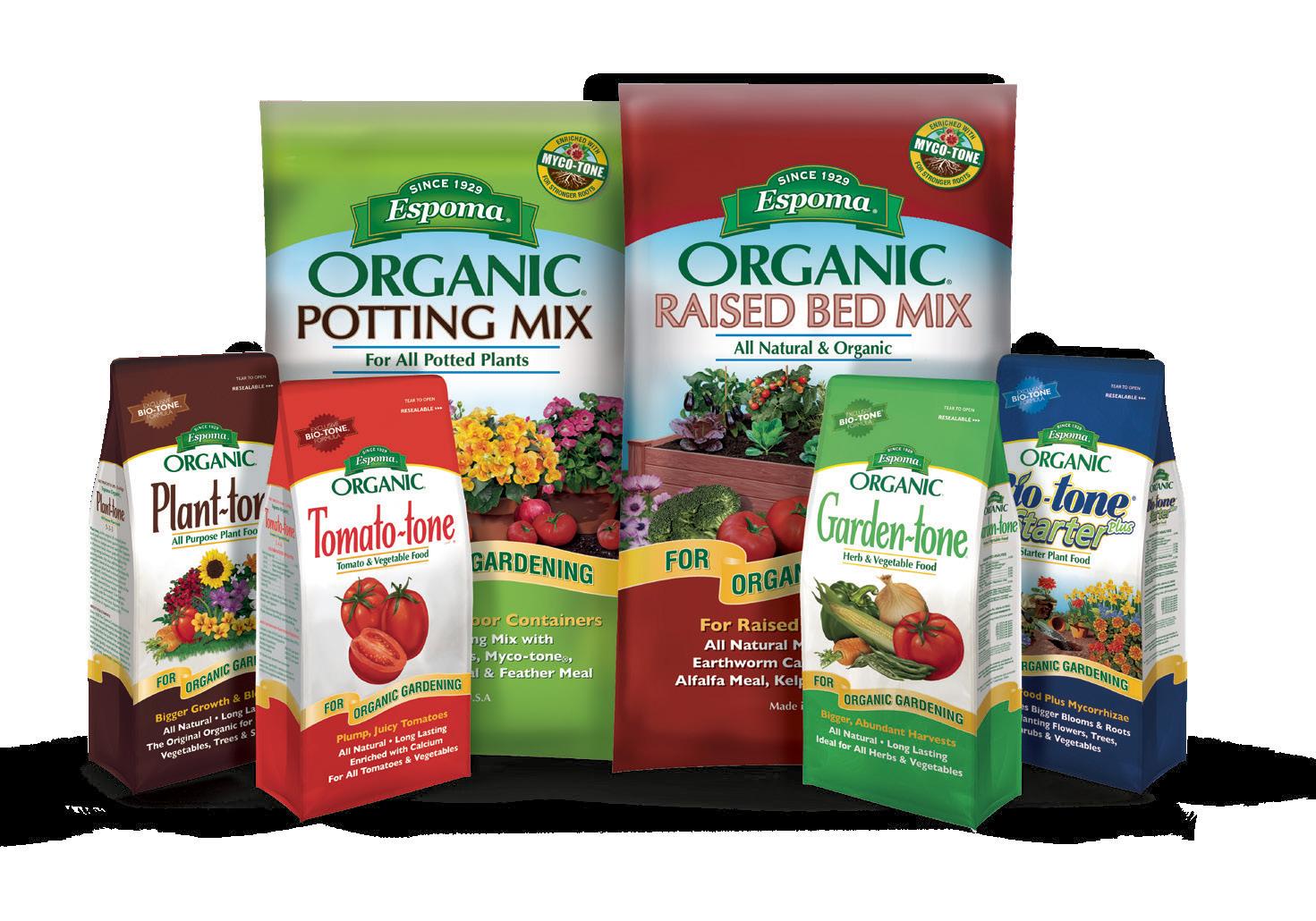
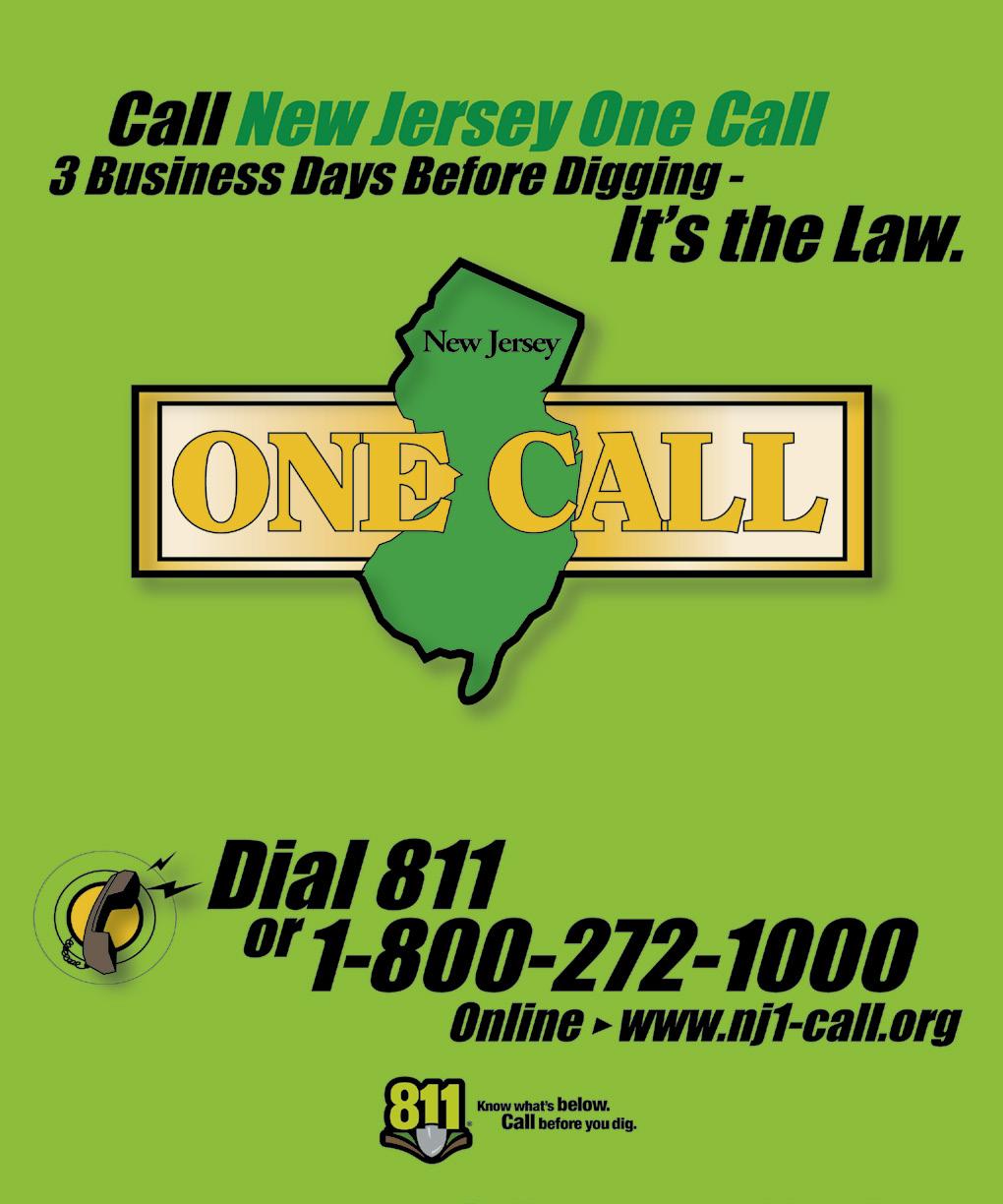
GardenerNews.com March 2023 11 Espoma. A natural in the garden since 1929. Watch your garden bloom and grow with all natural soil mixes and fertilizers from Espoma Organic ® , the leader in organic gardening for over 90 years. www.espoma.com the #1 brand in organic gardening BILL RANDOLPH AGENT 908.782.4028 SERVING THE AGRIBUSINESS COMMUNITY LIFE • PROPERTY DISABILITY INCOME INSURANCE American National is a group of companies writing a broad array of insurance products and services. Products and services may not be available in all states. Terms, conditions and eligibility requirements will apply. Life insurance and annuity products may be underwritten by American National Insurance Company, Galveston, Texas. Property and casualty products and services may be underwritten by Farm Family Casualty Insurance Company, Glenmont, New York. Form 11094 | 12.18 12 Center Street, Chatham, NJ 07928 www.ChathamPrint.com (973) 635-1880 Graphic DesiGn | printinG | Direct mail Establish ed 1978 SUBSCRIBE TO THE Gardener News Please visit the top right-hand corner of www.GardenerNews.com
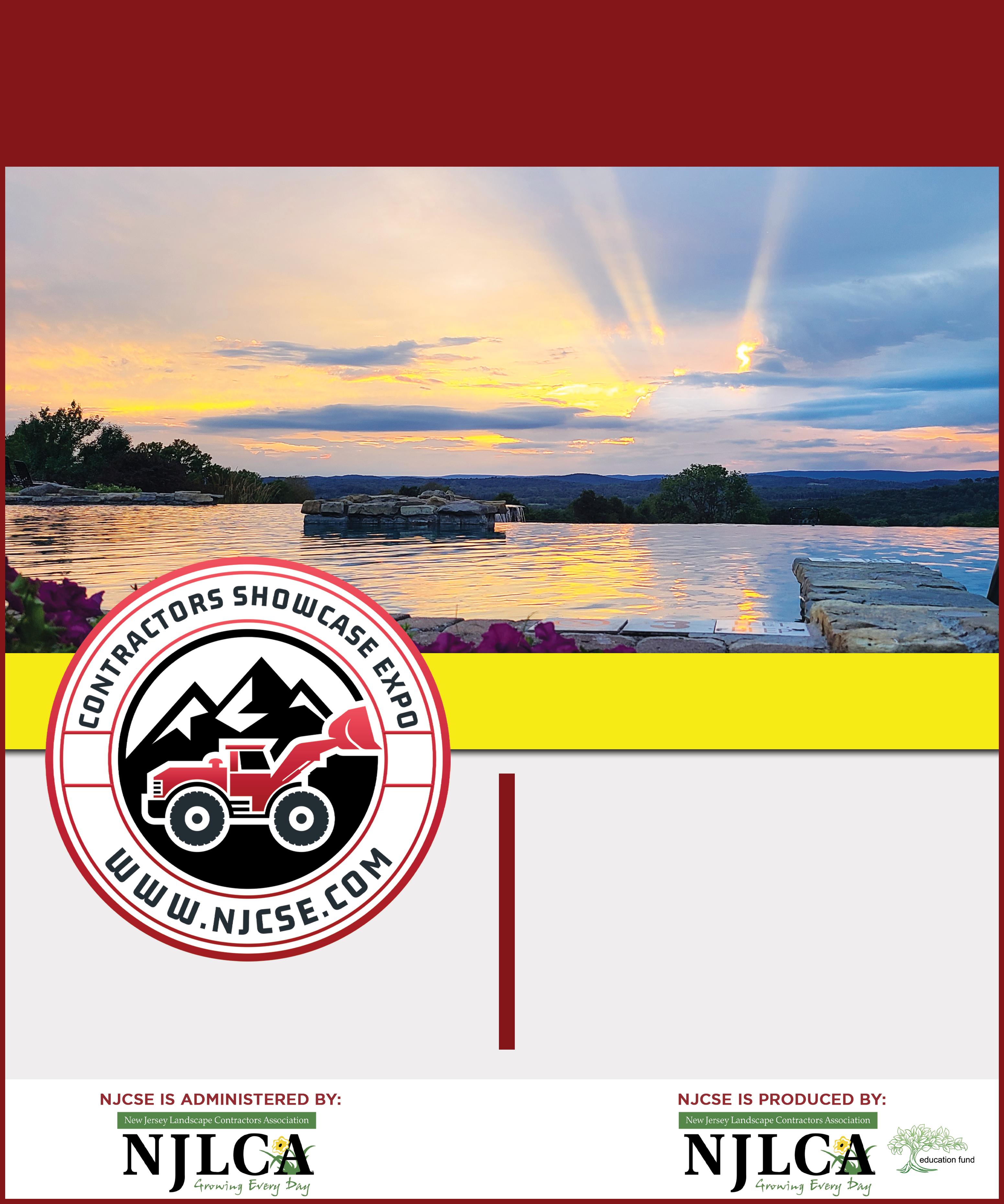

GardenerNews.com 12 March 2023



GardenerNews.com March 2023 13 of Nort h Jersey Bobcat of North Jersey 201 MALTESE DRIVE TOTOWA , NJ (973) 774-9500 http://www.njbobcat.com Bobcat , the Bobcat logo and the colors of the Bobcat machine are registered trademarks of Bobcat Company in the United States and various other countries. ©2021 Bobcat Company. All rights reserved. 14520937 Bo B cat .com/Large e xcavators When your work calls for big performance and productivity for difficult jobs, step into new large excavators from Bobcat. Sometimes, bigger challenges demand a bigger excavator. New Bobcat ® large excavators will measure up and then some. Available of Nort h Jersey Bobcat of North Jersey 201 MALTESE DRIVE TOTOWA , NJ (973) 774-9500 http://www.njbobcat.com Bobcat ® , the Bobcat logo and the colors of the Bobcat machine are registered trademarks of Bobcat Company in the United States and various other countries. ©2021 Bobcat Company. All rights reserved. 14520937 Bo B cat .com/Large e xcavators When your work calls for big performance and productivity for difficult jobs, step into new large excavators from Bobcat. Sometimes, bigger challenges demand a bigger excavator. New Bobcat ® large excavators will measure up and then some. 0% Financing Available Contact our Sales Specialists Patrick Barckett 201-446-0127 Patrick.Barckett@NJBobcat.com Craig Dahl 201-788-4838 CraigD@NJBobcat.com Steve Caputo 973-800-5097 Steve.Caputo@NJBobcat.com Sean Kunkel 973-800-7109 Sean.Kunkel@NJBobcat.com When your work calls for big performance and productivity for difficult jobs, step into new large excavators from Bobcat.
bigger challenges demand a bigger excavator. New Bobcat® large excavators will measure up and then some. 201 Maltese Drive, Totowa, NJ www.njbobcat.com • (973) 774-9500 Leasingfor aslowas $785permonth (BasedonE32Bobcat MiniExcavator) Proudly Supporting the Entire New Jersey Agricultural, Gardening, Landscaping and Nursery Communities. A Proud Sponsor of the SEE THEM! TOUCH THEM! OPERATE THEM! SO MUCH MORE THAN A TRADE SHOW! Save the Date Wednesday, August 2, 2023 Visit NJCSE.com for Show Information
Sometimes,




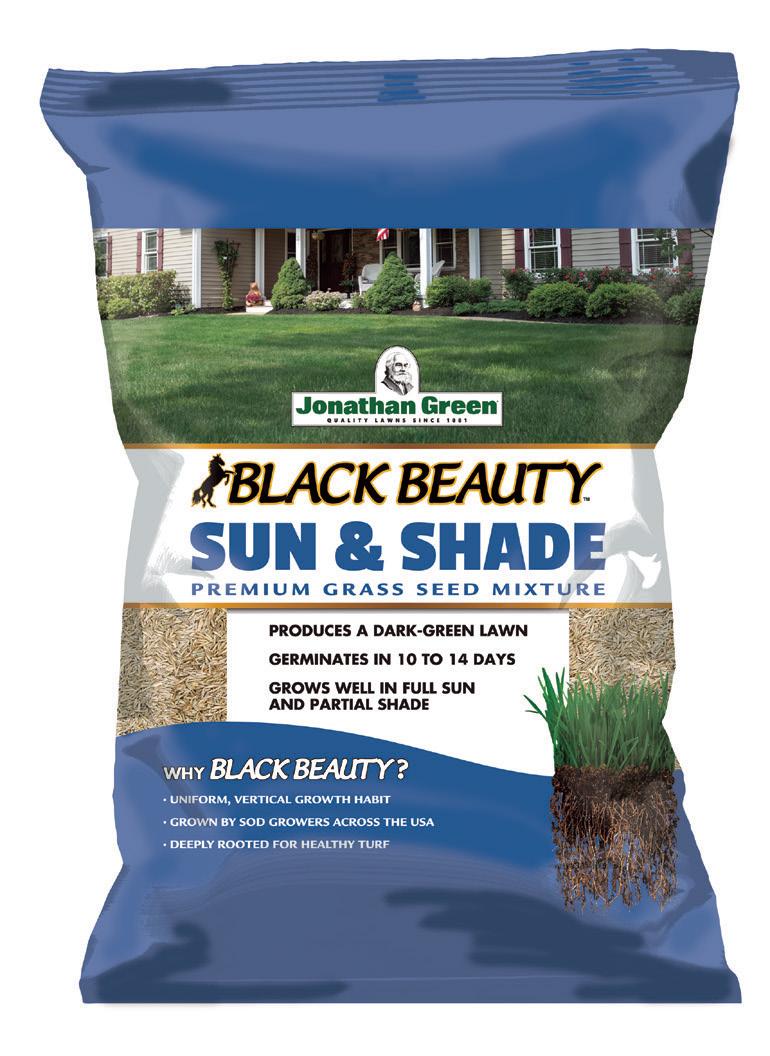
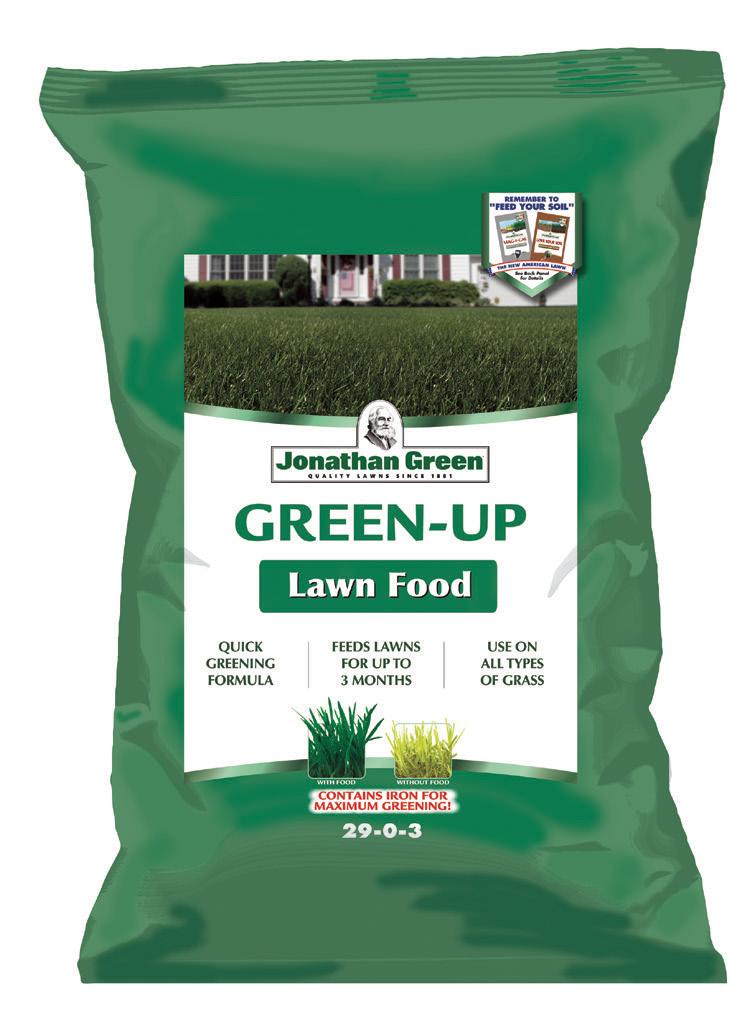
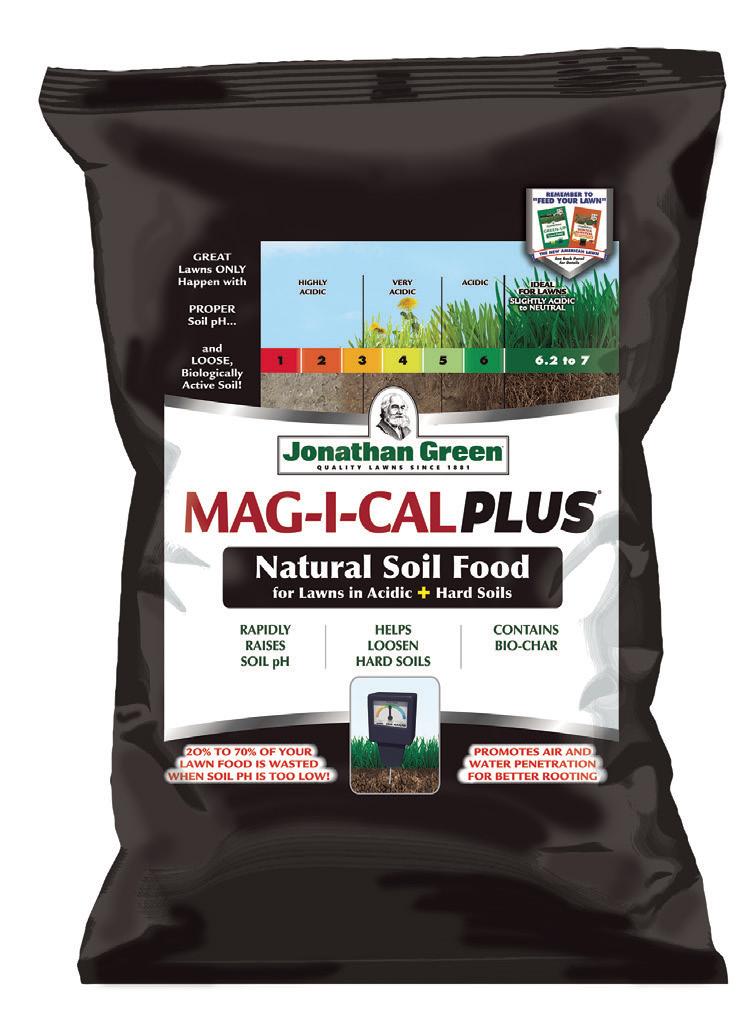










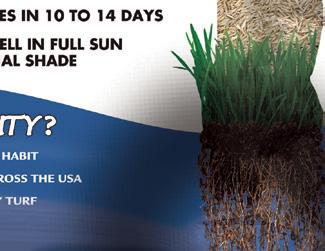



































GardenerNews.com 14 March 2023 Available at garden centers and hardware stores in your area. Ask for a free copy of our Lawn guide. 3/23 Discover the “Jonathan Green” Difference on your lawn today. IT DOESN’T TAKE LUCK TO GROW A BEAUTIFUL LAWN 18 Hamilton Rd., Hillsborough, NJ 08844 (908) 359-4652 • CentralJerseyNurseries.com GARDEN CENTER HARDWARE LANDSCAPE MATERIALS NURSERY STOCK POWER EQUIPMENT Read The Gardener News Online At GardenerNews.com
Wow, today as I write my article it snowed a little bit. I was wondering if there were any storms to come after that cold one in December. Spring is right around the corner and it’s time to think about your upcoming lawn care program.
March is usually the month that many homeowners do a good yard clean-up, including picking up twigs, raking of leftover leaves, and finding bare spots in their lawn. The sooner you can rake and seed these areas the better. Spring seeding takes more time that usual to germinate due to the cold weather and soil, and if too much rain persists in early spring. Try to get as much of the new grass seed established and mowed multiple times before another summer drought comes along. Buy a grass seed mixture designed to grow in the area you are seeding, whether for shade, sunny or traffic areas. All grass seed needs some sunlight to grow, like all plants. However, a shady mixture will perform better in the shade than a sunny mix, and that’s why we
Turf ‘s Up
By Todd Pretz Professional Turf Consultant
I Like My Green Grass
make them that way. Don’t wait until May-June to apply grass seed if at all possible. Remember last July’s hot, humid weather?
In New Jersey, you can apply fertilizer to lawn areas after March 1st. If you are seeding, the use of a “starter-type” fertilizer is recommended. These seeding fertilizers have a high middle number like 12-18-8. The “18” is the Phosphorus which is needed to help build strong roots. If you need any other soil amendments such as to raise your soil pH or loosen hard-packed soil, now is the time for these to be applied too. Soil amendments take time to do their thing in the soil. Why wait until summer?
They will not have any effect on the newly planted grass seed.
Applying a fertilizer and pre-emergence combination product in early spring for crabgrass would depend on the weather and soil temperatures. Crabgrass seeds do not germinate until the soil temperature reaches about 55 degrees. If the air temperature hovers in the 50’s for a few weeks, the soil temperature may still be lower, especially if rainfall is abundant. You can get soil temperatures for your area off of the internet. Crabgrass seeds do not all germinate at the same time at 55 degrees; it will vary in your yard based on soil types, shade,
etc. Applying pre-emergent too early may result in poor crabgrass control. The active ingredient may run out when you need it most, in late spring, to prevent crabgrass seeds from germinating. The moral of this story is for best control, do not put down your crabgrass preventer too early. Be sure your mower is ready to go before you need it for the first time. A sharp blade makes a big difference in the look and quality of your lawn. You can try mowing in different directions for a new look, and this also reduces you creating mowing tracks in the same spot very time you mow. Do not cut off more than 1/3 of the height of your grass and do not mow
too low, 2-1/2 to 3-1/2 inches is best.
In general, you should not have to irrigate your lawn in early spring; rainfall tends to be abundant during these months. You may need to irrigate some in late spring if heat and drought conditions arrive earlier than usual. Overwatering will not make your lawn grow any better; in fact it might make it worse. Too much water makes the grass “bloated” and may cause fungus to arrive. If the blades are too wet all of the time, it will make mowing more difficult too. We do not live in the rainforest and we do not need to water our lawn a little every day.
Happy spring to all, and sadly the football season is over. I hope my Eagles won the Super Bowl!
Editor’s Note: Todd Pretz is Vice President of Jonathan Green, a leading supplier of lawn and garden products in the northeast. For more information, please visit: www.jonathangreen.com

Revival of the American Chestnut?
By Hubert Ling
The American chestnut was probably the most important tree in Eastern North America and made up about 25% of the forest. This tree supplied wildlife and humans with an abundant and valuable annual cash crop of nuts; stories are told of chestnuts piled three feet high accumulating in front of fallen logs.
Chestnut lumber was very resistant to decay; this valuable wood was widely used in log cabins, fences, barns, railroad ties, pilings, and chests. This tree was the one we could least afford to lose.
Chestnuts grew up to 100 feet tall and ten or more feet in diameter. The tree had massive spreading branches generally 50 feet or so above ground level. The seedlings were fast growing and shade tolerant; when the mature trees were cut down, the stumps sprouted vigorously and quickly repopulated cut areas.
Chestnut wood is relatively light, strong, tan in color, and frequently has numerous pin holes caused by the larvae of the chestnut borer. These pin holes do not significantly decrease the strength or value of the lumber
Conservation efforts were contemplated shortly after mature trees started dying from the 1904 Chestnut Blight in NYC. The blight was probably started from imported, infected Asiatic chestnut trees.
Chestnut Blight, Cryphonectria parasitica, is a super deadly disease to the American chestnut with over a 99.9999% mortality. Unfortunately this fungal pathogen can also mildly attack oaks, and thus nonresistant chestnuts cannot safely be replanted in an area even if no mature chestnuts have been there for 100 years. The roots of the American chestnut are more resistant to the blight, and several of these sprouting stumps can still be encountered in forests which once held billions of mature chestnuts. By 1950 an estimated 3-5 billion
trees had been destroyed, and only a few scattered mature American chestnut trees survive today.
The USDA reported on limited initial efforts to breed resistance into American chestnuts in the 1930’s by using crosses to more resistant European or Asian species. This work was terminated in 1960; an undocumented claim by an older friend said that the neglected test plots, on private land, were inadvertently chopped down to make way for construction projects.
In the 1980’s, concerted efforts at chestnut restoration were restarted by two independent non-profit foundations. The American Chestnut Cooperative Foundation is breeding the few surviving adult American chestnuts in hopes that some of the progeny will show superior blight resistance. Since this project has only proceeded a few generations, it is too soon to see solid positive results. Several blight resistant lines have been produced, and individual seeds
and young trees are sometimes available for test trials to the involved public.
Another group, The American Chestnut Foundation (TACF), has been trying a three pronged attack. The first approach is American chestnuts are crossed to partially resistant Chinese chestnuts and the progeny are selected for blight resistance, and then backcrossed to American chestnuts to recover superior lumber and other characteristics of the American chestnut. The results have been promising but additional work is needed before a fully resistant variety is released for forest restoration.
For the second, TACF has also inserted a resistance gene (OxO) from wheat into an American chestnut line. This strain has good blight resistance but it is feared that the blight fungus will simply mutate and attack with an overpowering virulence.
Lastly, TACF has been trying a biocontrol attack with a virus which weakens
the blight fungus. Since it is difficult to get the virus into the tree, it was inoculated into the blight fungus in the lab. Then the virus-infected blight fungus was inoculated into a tree where it would fuse with the blight fungus already in the tree. This fusion will cause the blight fungus in the tree to be less virulent. However, in many cases, this procedure does not work.
Partially blight resistant strains of American chestnut are occasionally available via the internet if you want to experiment and see how particular trees survive, and both Chestnut Foundations are always interested if you have located, in the wild, a pure mature American chestnut with good blight resistance.
Editor’s Note: Hubert Ling is Horticultural Co-Chair of the Native Plant Society of New Jersey. He can be reached at milhubling@ verizon.net.
GardenerNews.com March 2023 15
US Organic Produce Sales Top $9.4 Billion in 2022—Dollar Growth Up 3%, Volume Down 3.7%
According to the Organic Produce Network, the organic fresh berry category (which includes strawberries, blueberries, raspberries, and blackberries) was the top organic produce category, holding more than 16 percent of organic fresh produce dollars in 2022. Overall fresh berry sales topped 1.6 billion for the year, with organic packaged salads a close second at $1.55 billion.
Total fresh produce sales gained 7.3 percent in dollars for the year but experienced a –1.3 percent decline in volume. Organic fresh produce made up 12 percent of all fresh produce sales and accounted for 7 percent of all fresh produce volume.
Organic apples were the largest example of substitution as their price per pound increased by more than double the amount of conventional, resulting in a volume decline of –10.3 percent.
For 2022, 13 of the top 20 organic produce categories (by total sales) posted increases in dollars, with organic onions generating the largest increase (15.4 percent), followed by cucumbers, potatoes, and avocados. Conversely, green beans posted the largest drop in dollars (–5 percent), and lettuce and bell peppers also posted noticeable declines in dollars for the year.
Additionally, 14 of the top 20 organic produce sales categories posted declines in volume, with only 10 of those categories showing positive dollar growth. Organic bananas continued to be the biggest volume mover despite a –1.2 percent volume decline in 2022 and showed a modest 3.9 percent increase in sales from the previous year.
Of note, potatoes and cabbage, typically regarded as inflation busters, showed a 10 percent increase in dollar sales and a nominal 1 percent growth in volume. Organic grapes had a stellar year, with a 6.9 percent increase in volume and an 8.3 percent increase in sales.
Organic performance in 2022 was consistent among all regions of the nation—dollars grew and volume declined. The Northeast saw the lowest dollar growth and highest volume decline, while the South continues to show the most year-overyear improvement.
Organic fresh produce prices in aggregate remained substantially higher than conventional, with 2022 showing the price gap between conventional and organics the largest it has been in the past four years at $1.55 per pound. “In an inflationary time period, it is important for organic producers to understand how their pricing impacts behavior among various consumer segments and to reach those consumers with the health and value benefits associated with organics,” said Barnes.
The fourth quarter of 2022 saw the twelfth consecutive quarter of organic sales growth, with a modest 1.4 percent increase from the same period last year. Organic produce sales for the fourth quarter topped $2.1 billion, with the grape category leading the way in year-over-year dollar and volume growth.
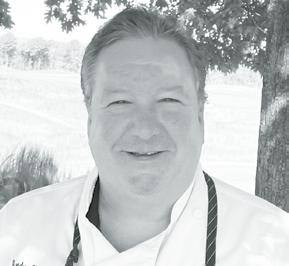
The 2022 Organic Produce Performance Report utilized Nielsen retail scan data covering total food sales and outlets in the US from January through December 2022.
The Organic Produce Network (OPN) was founded in January, 2017, to connect facets of the organic produce community through education, information and live events. Learn more at https://www.organicproducenetwork.com
In the Chef’s Corner
By Andy Lagana Chef
Braised Spring Lamb Shanks
Hello Gardener News family. Spring is just around the corner, and in honor of the approaching season, I would like to share a recipe for a favorite dish that is both tasty and satisfying – Braised Spring Lamb Shanks.
The lamb shank is a cut from the shin of the lamb, and is one of the most flavorful. The connective tissue, which gives lamb shank its flavor, also leads to toughness if not prepared correctly. Lamb shank needs to be cooked over low heat for a long time to become flavorful and juicy. It is a favorite in various Mediterranean cuisines, and given its bold and gamey flavor, it pairs well with distinct spices.
Because lamb shank will require a bit of your patience at the stove, it is an inexpensive lamb cut that is often overlooked compared to more easily grilled neighboring cuts. This makes it an affordable option for those who enjoy lamb, but avoid it due to the high price compared to other meat such as beef and pork.
Ingredients needed for this dish include 4 lamb shanks, salt and pepper,
2 tablespoons olive oil,
3 large carrots cut into 1/4 inch rounds, 2 chopped onions, 10 cloves of minced garlic,
1 (750 ml) bottle red wine,
1 (28 oz.) can whole peeled tomatoes with juice, 1 (10.5 oz.) can condensed chicken broth, 1 (10.5 oz.) can beef broth, 5 teaspoons chopped fresh rosemary and
2 teaspoons chopped fresh thyme.
The preparation directions are easy to follow. First,
season the lamb shanks with salt and pepper to taste. Heat the olive oil in a large, heavy pot or Dutch oven over medium-high heat. Then, working in batches, cook the shanks until brown on all sides, for approximately 8 minutes. Transfer the shanks to a plate and set aside.
Add the carrots, onions, and garlic to the pot and sauté over medium heat until golden brown, about 10 minutes. Stir in the wine, tomatoes, chicken broth, beef broth, rosemary and thyme. Next, return the shanks to the pot, pressing down to submerge. Bring to a boil, and then reduce the heat to medium-low. Cover and simmer until the meat is tender, which should take about two hours. Remove the lid and simmer for 20 minutes to allow flavors to concentrate. Transfer the shanks to a platter and cover with foil to keep warm. Continue boiling the sauce for about 15 minutes until it is thickened. Finally, spoon the sauce over the shanks before serving.
As a side dish, broccolini is a great choice for this entrée. You may be wondering what exactly this vegetable is. Broccolini is a cross between broccoli and Chinese broccoli, and belongs to the cabbage family. It is grown primarily in Mexico, Arizona and California. They have long, firm stalks (thinner and more tender than those of broccoli), a few small leaves and small florets. To prepare, start with two bunches of broccolini (about 1 pound total), 1 tablespoon olive oil, 4 cloves of fresh thinly sliced
garlic, salt and pepper to taste, 1 teaspoon of crushed red pepper flake and ½ cup of chicken stock
Rinse the broccolini under cool water and shake off the excess water. Trim about 1/2inch off the bottom of the broccolini stems. Then, heat the oil in a large straightsided skillet over mediumhigh heat until shimmering. Add the broccolini and sauté until it is bright green and some of the stems and tips of the florets are lightly charred, approximately 5 to 7 minutes.
Add the garlic, salt and red pepper flakes. Continue to sauté until the garlic is fragrant, about 30 seconds. Next, mix in the stock, cover, and cook until the broccolini is vibrant green and crisptender, 1 to 2 minutes. Serve immediately with lemon wedges, which are optional.
With regard to wine pairings, this dish is very wine friendly and goes well with rich red wines such as Amarone, Bordeaux and Shiraz. These varietals help mask the gamey flavors of the shanks with their notes of dark fruit flavors. Out of these three selections, the Amarone would be my pick. Amarone della Valpolicella is a red wine from the Veneto province in northern Italy. In Italian, the name Amarone literally means “great bitter” which was originally used to distinguish it from the sweeter Recioto wines produced in this region. I so enjoy the distinctive deep complexity of each sip, just perfect with this lamb dish.
GardenerNews.com 16 March 2023 Editor’s Note:
Lagana is a Chef at Crystal Springs Resort in Hamburg, Sussex County, N.J. For more information on its culinary program, visit www.CSResort.com.
Andy











GardenerNews.com March 2023 17 NJ’S #1 EVENT & MEETING FACILITY – NJBIZ
has never been a better time to plan an inspiring team kick-off at Crystal Springs Resort, considered Best in Class in all areas of operation. EVENT EXECUTION • TEAMBUILDING • ACCOMMODATIONS CULINARY • WINE CELLAR • GOLF OFFERINGS • SPAS NATURAL SETTING • SUSTAINABILITY • LOCATION {1 HOUR FROM NYC} For more information and to schedule a tour, call the Resort sales team at 888.592.9091. TheCrystalSpringsResort.com Sussex County, New Jersey
MAKE 2023 YOUR BEST YEAR YET There
We’re almost there, almost to a glorious spring of blooming flowers and growing turf again. And I can’t wait! The warmth of the sun on your skin, the smell of hyacinth in the air, fresh cut grass wafting throughout the neighborhood, what could be better?
With the new season comes a reminder that safety should always come first. One of the NJLCA’s main pillars is Safety, and it ended up being, inadvertently, an overarching educational theme at the NJLCA’s recent Landscape New Jersey Trade Show and Conference in the Meadowlands.
Topics at the show included weeds and diseases of both turf and ornamental plants, hardscape innovation, permeable paver solutions, native plants and more. But many of our sessions focused on safety, including pesticide safety and storage, landscape equipment sanitation, building a safety program, drainage (I do consider drainage a safety issue, as runoff is important and if water freezes, we have another hazard), and proper tree and plant installation. Of course, all the pesticide classes also focus on safe use, and reducing the need for them as well.
Whether you are a seasoned landscape professional reading this, or a DIY homeowner, you must
I don’t think the poet T.S. Eliot was a gardener, but he got it right when he wrote - “We shall not cease from exploration, And the end of all our exploring, Will be to arrive where we started, And know the place for the first time.”
This year I am planting marigolds again, having not done so since I was seven years old. Marigolds, easy to grow and reliably hardy, comprised my early garden efforts. The Brooklyn hell strip I grew them in yielded bright yellow and gold flowers which we children picked freely and used to decorate stoops and porches, strung on yarn to festoon bicycle handlebars, and stuffed into squat, glass jelly jars for picnic table lunches.
Today, the seed catalogues cluttering my desk are filled with marigolds. What will I be growing and why? The why is simpleprofuse bloom, ease of care, heat, humidity and drought tolerance, and, yeah, the memories. Here are some contenders.
Mid-size at 1’ tall, ‘Fireball’ morphs from fiery bronze to dark gold. Fall’s cooler temps enhance its colors. The same is true for ‘Mr. Majestic,’ with brightly striped petals of gold and mahogany, perfect for autumn containers. Color change continues with the
The NJLCA Today
By Gail Woolcott Executive Director

March Into a Safe Spring
remember to keep your and others’ safety in mind when taking on any home improvement. With that comes the responsibility of hiring a landscape contractor who is properly insured and takes safety seriously. The cheapest price is not always the least expensive option if you find that your contractor is uninsured and one of their employees gets hurt on your property. Because if that happens, it is the homeowner’s insurance that will need to pay for his medical expenses. Therefore, if you are hiring a landscape professional to do any work at your home, ask them to show you that they are properly insured. Furthermore, if they are applying pesticides or fertilizers, make sure that they have the proper licensing as well.
This brings us to another safety topic that is near to my heart. Homeowners who are not properly trained and licensed should NOT be
applying their own pesticides and fertilizers. Let me repeat that… Homeowners not properly trained should not be applying their own pesticides and fertilizers…at all. Despite the fact that you can pick up many of these products at your local big box store, and that they are tested for safety, they are only “safe” if applied properly and according to the label. Application professionals undertake many hours of training per year to understand what these products are made up of, how they work, which are used for which type of problem, and more. Just reading the label is not enough. Please, for the safety of you, your family, and the environment, hire a professional to mitigate any pest and weed problems at your property.
In addition, landscape equipment, although found in many households, is still considered dangerous equipment, and all safety
precautions must be taken when using them. I’ve heard horror stories of homeowners losing fingers to mower blades, chainsaws cutting through a leg, and rollovers of excavation equipment. And professionals must be just as careful. Because they are using the equipment daily, they sometimes become lax or complacent. Remember to hold safety talks with your employees at least once a week. Remind them and yourself to always wear proper PPE, remind them to drive safely, and remember that your lives are as important as your customers and your employees.
I’d like to wish everyone a very Happy Saint Patrick’s Day and let’s hope that March does in fact go out like a lamb. Please, for all those who care about you, have a very safe landscaping season and take some time to take the proper precautions. Hire a professional
The Garden Historian
By Lesley Parness Garden Educator
“Marigolds–To Arrive Where We Started”
beauteous ‘Strawberry Blonde’when warm it’s a yellowed pink, when cooler, a pinky plum. Her frilly petals are showstoppers. ‘Bali Mix’ features 5” wide blooms with sturdy 30” tall stems to withstand a stiff wind. Almost unrecognizable as a marigold, the creamy colored, anemone type ‘Alumia Vanilla Cream’ is a foot-tall charmer. Another masquerading variety is the chrysanthemum-shaped ‘Mission Giant Yellow,’ an heirloom with 3” double flowers that Burpee just released from its vaults. The 2018 AAS Winner ‘Super Hero Spry’ promises not to need deadheading and persists through October. A yellow nebula of pert petals is surrounded by a halo of maroon. ‘Triple Treat’ with yellow, orange and red flowers all at once is another deadhead-free choice. ‘Antiqua’ is one of the few day neutral cultivars. Not sensitive
to sunlight, it will bloom in about eight weeks regardless of when sown. ‘White Swan’ improbably smells like marshmallows!
The two main species grown in home gardens are the French marigold (Tagetes patula) and the African or American marigold (Tagetes erecta). French marigolds are more compact in stature, with smaller flowers. African marigolds are much larger, with blooms up to four inches across.
In the edible marigold category, there are also Signet or Golden marigolds (Tagetes tenuifolia) For example, the bite sized Gem Series (Tagetes tenuifolia) offers citrus scented and flavored flowers.
The leaves of Mexican or Sweet-scented marigold (Tagetes lucida) taste like anise and may be used as a tarragon substitute.
Marigold petals and leaves, raw or blanched, fresh or dry, may be
when you are not properly trained to do something, and if you are a professional, make sure you and your employees always think safety first!
Editor’s Note: Gail Woolcott is the Executive Director for the New Jersey Landscape Contractors Association. Gail received the New York State Turf & Landscape Association 2022 “Person of the Year” award on December 1, 2022. Gail also received a proclamation from the Westchester County, New York Board of Legislators proclaiming December 1, 2022 as “Gail Woolcott Day” in Westchester County. Gail has also been presented with a community service award from the Borough of Fairview, New Jersey for her assistance in leading the 9-11 Memorial Park project and the Legislative Champion of the Year award from the Federation of Employers and Workers of America. She can be reached at 201-703-3600 or by emailing gwoolcott@ njlca.org.
Simply interplanted around other crops, they are not as effective as nematode repellents. Mexican marigolds are said to repel wild rabbits, but I’m not convinced.
I’ll be starting Marigold seeds on about March 16, six weeks before the last frost date for my town. You can get your local first and last frost dates at www. almanac.com/gardening/frostdates.
eaten. To prepare marigolds, pull all the petals from the stem, and as you hold them firmly in your hand, cut off the bitter-tasting white (or pale greenish) “heels” with a scissor.
Harvest marigold and calendula flowers as they open in late morning for garlands, cut flowers, and edible flowers for salads, cakes, and teas. Marigolds are easy to dry and store for later use. To dry, spread the flowers on a screen in a well-ventilated, shady location and store in glass jars in a cool, dark place. The seeds store well too, for sowing next spring.
From an IPM perspective, French marigolds are thought to be the best at repelling some types of nematodes. The best advice for doing this is to plant a thick stand of marigolds, grow them for three to four months, and then till them under like a green manure crop.
Then, I’m looking forward to arriving where I started - in the garden, with marigolds.
Editor’s Note: Lesley Parness offers a variety of presentations and workshops for garden clubs, plant societies, and horticultural gatherings. Recently retired from her position as Superintendent of Horticultural Education at the Morris County Park Commission, and with four decades of teaching environmental science and garden education, her focus now is garden history. A complete listing of her talks can be seen at lesleyparness. com and she can be reached at parness@verizon.net. This column will appear in the paper every other month.

GardenerNews.com 18 March 2023
As the days get longer and the temperatures start to warm up, it is time to start thinking about planting fruit trees. The optimal time to do this is as early as possible in the Spring when the ground has thawed and dried sufficiently. Generally speaking, this can be anytime in late March through the month of April here in the Garden State, although preparations should have started back in the fall. Hopefully, a soil test was taken of the ground where the trees are going to be planted. Using these test results, it is important to get the PH of the soil up to optimal level, and to ensure that there are optimal levels of Phosphorous and Potassium in the soil as well. It is extremely important to get this taken care of before the trees are planted. With annual crops such as grains and vegetables, there is the ability to work nutrients into the soil on a yearly basis. With fruit trees, however, the soil will not be able to be tilled once the trees are planted. This means that any nutrients applied on top of the ground will have to work their
The Town Farmer

 By Peter Melick Agricultural Producer
By Peter Melick Agricultural Producer
Fruit Tree Planting
way down to the roots of the trees, which could take years to occur. That’s why it is best to take care of any fertility issues before planting.
Another step that should be taken is to ensure that the trees will be protected from deer and other wildlife once they are planted. I know that it might seem premature to do this before planting, but all it takes is one night for a new block of fruit trees to be decimated by a hungry herd of deer. So, whether it is individual cages, or an entire fenced-in area, it is best to take care of this before the trees go into the ground.
Take a good look at the area where the trees will be planted and make certain that
Tips

there will be enough sunlight throughout the season, and that there is sufficient drainage of storm water. If not, take this opportunity to cut down or trim back any other trees which might compete for sunlight. Remember, fruit trees do best with 100 percent full sun. Also, fruit trees do not fare well in wet ground. Make sure that the area selected for planting is dry and that any excessive rainfall can be diverted away from the trees. Another option is to mound up the soil before planting. This will keep the soil around the tree warmer and drier and lead to better growth of the tree.
When planting the trees,
make sure that the soil is dry enough that it flows freely and settles around the roots. This good soil condition will keep any air pockets from forming. The last thing that you want is to plant the tree in soil that is clumpy and too wet. Also, make the hole a little larger than the roots or root ball and fill it in with nice fresh loose dirt. This will allow for rapid growth of the root system once it starts growing.
It is also important to plant the trees at the proper depth. With apple trees, the bud union should be two or three inches above the soil line. With peaches, plums and cherries, the bud union should be just above ground
level. Also, face the bud union into the prevailing wind. This will help to keep the trees growing upright in case of a windstorm. And if you place some smooth gravel around the trunk of the tree, as the wind blows the tree around, the gravel will drop into the area around the trunk which will also help to keep it upright.
Once the trees are planted and if it does not rain within a few days, water the trees in. This will settle the dirt around the roots and get rid of any air pockets in the soil. Good luck!
Editor’s Note: Peter Melick is co-owner of Melick’s Town Farm in Oldwick and a 10th-generation New Jersey farmer. Peter is Mayor of Tewksbury Township, Hunterdon County, NJ. He also served as a director for the New Jersey Farm Bureau and is a past president of the New Jersey State Board of Agriculture. Peter has also been featured on NJN, News 12 New Jersey and on the Fox Business Network.


GardenerNews.com March 2023 19
Celebrate St. Patrick’s Day with us! Celebrate St. Patrick’s Day with us! *Award Winning Wine List* Seafood, Steaks, Pasta. Are Our Specialties Daily Lunch & Dinner Specials Family Style Meals To-Go Curbside Pickup and Takeout Advertise in the Gardener News Please visit www.GardenerNews. com and click on the Advertising Link in the center of the Navigation Bar to view our Media Kit. We can be contacted through our Contact Us Form, also on the Navigation Bar. Thank you!
NORTHEASTERN ASSOCIATION OF STATE
The Northeastern Association of State Departments of Agriculture convenes the following 10 states: Connecticut, Delaware, Maine, Massachusetts, New Hampshire, New Jersey, New York, Pennsylvania, Rhode Island, and Vermont.
NEW YORK DEPARTMENT OF AGRICULTURE
State Agriculture Department Seeks Industry Nominations for Marketing Order Advisory Boards
The New York State Department of Agriculture and Markets announced that nominations are open for positions on New York State’s Apple, Onion, and Cabbage Marketing Order Advisory Boards. Marketing Order Advisory Boards help recommend funding priorities to the Department’s Commissioner, inform the Department of industry issues, and ensure that funded projects are having the intended impact on New York State agriculture.
Nominations should be submitted no later than Friday, March 10, 2023. Nomination forms and program information can be found at https:// agriculture.ny.gov/farming/marketing-order-administration.
State Agriculture Commissioner Richard A. Ball said, “New York’s agricultural industry benefits greatly by our Marketing Order Advisory Boards, helping to shape and support new market opportunities for our farmers and promotional opportunities to increase awareness about these economically sigfinicant crops. I encourage growers and processors across our state to consider serving on a board and being a part of these important initiatives.”
New York State’s Marketing Order programs are industry-initiated and provide critical funding for promotional and research-based projects aimed at improving the profitability of target crops statewide. The following Marketing Order programs are currently seeking nominations of industry professionals to serve on their Advisory Boards:
•Apple Marketing Order – One opening exists for a grower from eastern New York (nominations will also be accepted for western NY apple growers, processors, and storage operators for future consideration).
•Apple Research and Development Order – No current openings, however nominations for apple growers from eastern and western New York, apple processors, and apple handlers will be accepted for future consideration.
•Onion Research and Development Order – Current openings include two growers from eastern New York and one grower from western New York (nominations will also be accepted for growers from western and central New York for future consideration).
•Cabbage Research and Development Order – One opening exists currently for a grower, processor, or handler from anywhere in the state; nominations will also be accepted for either designation for future consideration.
Marketing Order Advisory Boards typically convene twice a year: once to establish a recommended annual budget based on available funds and provide required motions; and once to ensure funded projects are meeting desired outcomes. As needed, each Advisory Board may also convene to discuss pressing industry or program issues to ensure proper implementation of the Marketing Order. Conference calls and/or in-person meetings will be scheduled based on Board member preference.
For more information, please contact William Shattuck at William. Shattuck@agriculture.ny.gov or (518) 485-7306.
NEW JERSEY DEPARTMENT OF AGRICULTURE
New Jersey Department of Agriculture Places all Counties in Spotted Lanternfly Quarantine Zone
New Jersey Secretary of Agriculture Douglas Fisher announced the Department has placed an additional eight counties in the spotted lanternfly quarantine zone. Every county in the state is now part of the zone. One of the primary purposes of the quarantine is to bring attention to residents and business owners to check all materials and vehicles for the spotted lanternfly or its egg masses before moving goods or traveling.
“While spotted lanternflies are not visible now, the egg masses laid in the fall months can still be unintentionally moved, allowing them to hatch in new locations in the spring,” Secretary Fisher said. “While the NJDA and USDA have crews finding and scrapping egg masses, this quarantine serves as an alert to remind everyone to check for spotted lanternfly egg masses throughout the winter months.”
For more information about the spotted lanternfly go to www.badbug. nj.gov and click on the spotted lanternfly photo.
CONNECTICUT DEPARTMENT OF AGRICULTURE
Connecticut Department of Agriculture Funds Eight Projects with Food System Capacity Building Grant
Agriculture Commissioner Bryan P. Hurlburt announces that the Connecticut Food Policy Council, administered by Connecticut Department of Agriculture, has awarded eight grants through the Food System Capacity Building Grant totaling $79,812.88. Funds will be utilized by Connecticut organizations and groups involved in food system policy for the creation of innovative, localized programming in communities to increase food access and address food insecurity with a focus on utilizing CT Grown farm products.
“Through the dedicated efforts of the Food Policy Council members this grant opportunity became reality and the response demonstrates the very real need for resources to address food security and nutrition,” said Agriculture Commissioner Bryan P. Hurlburt. “We look forward to seeing these projects come to fruition to build long-term resilience, equity, and sustainability in the local food system.”
Eligible entities included local food policy councils or food working groups, Connecticut agricultural producers, for-profit and non-profit grocery stores, food pantries, farmers’ markets, community gardens, and small food retailers, convenience stores, mobile food markets, or retail food outlets operated by an emergency food program or food hub. Maximum awards of $10,000 with no match required were available for the 18-month grant period. The program received 58 applications totaling $569,711.62 in requested grant funds.
To learn more about the fiscal year 2023 Food System Capacity Building Grant awardees, please visit www.CTGrown.gov.
GardenerNews.com 20 March 2023
DEPARTMENTS OF AGRICULTURE NEWS
PENNSYLVANIA DEPARTMENT OF AGRICULTURE
Pennsylvania Poultry Owners Should Take Steps Now to Protect Flocks Against Highly Pathogenic Avian Influenza
As spring wild bird migration nears, Pennsylvania Department of Agriculture Secretary Russell Redding and Pennsylvania Emergency Management Agency (PEMA) Director Randy Padfield remind poultry owners to protect their flocks, and their neighbors’ flocks, along with the commonwealth’s economy, against highly pathogenic avian influenza (HPAI) by remaining vigilant and reviewing and implementing strong biosecurity plans and practices.
The United States Department of Agriculture’s (USDA) Animal Health and Plant Inspection Service recently confirmed HPAI in a commercial flock in Virginia.
“The best line of offense is a strong defense. Biosecurity is the best way to ensure your farm and poultry are safeguarded against disease,” said Redding. “Poultry producers should review and use strong biosecurity practices as part of their daily routine to protect their flocks, as well as Pennsylvania’s $7.1 billion poultry industry.”
With the continued threat of HPAI, there are strategic measures both commercial producers and backyard flock owners can take to protect their birds and operations:
• Strengthen your biosecurity plan. Biosecurity is most important for anyone who owns or works with poultry –whether on a commercial farm, in the wild, or a backyard flock. Pennsylvanians should take proper steps to keep HPAI from spreading:
• Keep visitors to a minimum. Only allow those people who take care of your poultry to come in contact with your birds; this includes family and friends. Keep track of everyone who is on your property at all times. Make sure everyone who has contact with your flock follows your biosecurity principles.
• Wash your hands before and after contact with live poultry. In addition to potentially spreading disease from farm to farm or bird to bird, you can also spread
germs such as Salmonella that can impact human health. Wash with soap and water (always your first choice). If using a hand sanitizer, first remove manure, feathers, and other materials from your hands because disinfectants and sanitizers will not penetrate organic matter or caked-on dirt.
• Provide disposable boot covers or clean boots for anyone having contact with your flock. A footbath can be added as extra protection. If using a footbath, be sure to remove all droppings, mud, or debris from boots and shoes using a long-handled scrub brush before stepping into the disinfectant footbath, and always keep it clean.
• Change clothes before entering poultry areas and before exiting the property. Visitors should wear protective outer garments or disposable coveralls, boots, and headgear when handling birds, and remove outer clothing or change clothes when leaving the facility.
• Clean and disinfect tools or equipment before moving them to a new poultry facility. Before allowing service vehicles, trucks, tractors, or tools and equipment—including egg flats and cases that have come in contact with birds or their droppings—to exit the property, make sure they are cleaned and disinfected to prevent contaminated equipment from transporting disease. Do not move or reuse items that cannot be cleaned and disinfected, such as cardboard egg flats.
• Report sick birds. Don’t wait. If your birds are sick or dying, call a local veterinarian, cooperative extensive service, or state veterinarian. If you suspect HPAI, contact the PA Department of Agriculture 24/7 at 717-772-2852, option 1.
• Have a premises ID. The ability to identify where poultry flocks are located in a disease outbreak is important to help
animal health officials stop the spread of disease quickly. Using Premises ID, state officials can quickly notify all flock owners of a dangerous disease in their area, provide recommendations for reducing the risk of their flocks becoming infected, and recommend testing if needed to rule out disease.
• Keep poultry away from areas frequented by wildfowl. Keep your birds indoors at high-risk times. If they cannot go indoors, make sure wild birds cannot access their feed and water sources.
• Maintain sanitation of property, poultry houses, equipment, vehicles, and footwear. Disinfect regularly and maintain biosecure, restricted access to your facility. For commercial poultry owners, clean and disinfect housing at the end of a production cycle.
Be aware of the signs and symptoms of HPAIOpens In A New Window in your flock:
• Sudden death without clinical signs
• Lack of energy and appetite
• Decreased egg production or soft-shelled or misshapen eggs
• Swelling of head, comb, eyelid, wattles, and hocks
• Purple discoloration of wattles, comb, and legs
• Nasal discharge, coughing, and sneezing
• Incoordination
• Diarrhea
The Pennsylvania Department of Agriculture continues to work with federal, state, local, and industry partners to prevent, prepare for, respond to, and recover from animal diseases, including HPAI. These partnerships, including those with PEMA and USDA, support a resilient commonwealth and foster continued economic opportunity.
PEMA coordinates resources and support across all levels of government and understands how critical it is to the poultry industry to ensure a rapid and efficient response to a HPAI outbreak.
“This influenza presents unique challenges that, if not managed through a robust and coordinated approach, could devastate an industry that is an economic driver in Pennsylvania,” said Padfield. “Our role in resource coordination and support brings together experts in many areas to assist the Pennsylvania Department of Agriculture to accomplish that goal.”
HPAI has directly impacted 25 commercial flocks and 10 backyard flocks in Pennsylvania, causing a loss of more than 4.3 million birds. On April 15, 2022, the department confirmed the state’s first positive case of HPAI in domestic poultry, in a flock of commercial layer chickens on a Lancaster County poultry farm. The most recent positive case detected in the commonwealth was on November 17, 2022. However, the department’s Bureau of Animal Health and Diagnostic Services continues to provide testing for suspected cases.
Producers can receive some federal funding to cover their losses, but Pennsylvania is the only state to have a dedicated fund of $25 million to help fill the gap in covering losses.
Pennsylvania’s poultry sector is a $7.1 billion industry, supporting more than 26,600 jobs across the commonwealth.
HPAI is very contagious and can make wild and domesticated birds very sick and lead to death.
According to the U.S. Centers for Disease Control and Prevention, HPAI detections do not present an immediate public health concern. No human cases of these avian influenza viruses have been detected in the U.S.
If you suspect your poultry is infected with HPAI, please report your concerns 24 hours a day, 7 days a week to the department’s Bureau of Animal Health and Diagnostic Services at 717-772-2852, option 1.
For more information about avian influenza, visit agriculture. pa.gov or the USDA website
GardenerNews.com March 2023 21
PHS Philadelphia Flower Show Returns Indoors
exhibitors is the Black Girl Florists network, led by Valerie Cristostomo, and including Alexis Christine of Flowers by Alexis, Leneille Moon of Special Event Factory, and Rashawn Scarbo of Bloom Bold Co. This network was created to support and celebrate black women in floristry, and the group offers workshops, group training sessions, and more to deliver on this impactful mission. They’ll be bringing “The Garden Electric” to life with an exhibit that draws inspiration from their own unity as black florists, illustrating that together they contribute to the growth and sustainability of their presence in the floral industry. The exhibit will feature an array of vibrantly colored florals reflective of the theme, lighting elements, and large-scale barrels brimming with stunning flowers pouring into a 10-ft.
tree.
The Garden State will be well represented at the Show.
Renowned New Jersey garden and landscape designer Susan Cohan, named “Designer of the Year in 2021” by The Association of Professional Landscape Designers, will also return to the Show. Her firm’s philosophy is rooted in the belief that thoughtful and responsibly designed landscapes enhance our lives. Cohan will celebrate the joy and exuberance we feel at the start of spring. Through utilizing a variety of spring ephemerals, a suspended interactive swing, and spiral motifs, Cohan will invoke the blissfulness of a spring day.
Peony’s Envy, a nursery and display garden in Bernardsville, Somerset County, New Jersey and owned by Lady Farmer Kathleen Gagan, the 2017
Full Moon March 7, 2023 Eastern Daylight
(Continued from page 10)
Gardener News “Person of the Year”, will also return to the Show. Peony’s Envy offers one of the most extensive collections of tree, herbaceous and intersectional peonies in the Northeast.
Mercer County Community College in West Windsor will have a display garden built by students enrolled in their horticulture program.
Horticulture is a profession that combines the creativity of design with the knowledge of science and the practical experience of making projects successful. The Ornamental Horticulture A.A.S. degree program trains students in the areas of landscape design, floral design, landscape maintenance, nursery and greenhouse production, and turf maintenance.
Also exhibiting will be Waldor Orchids from Linwood, Atlantic
First Day of Spring
Monday, March 20, 2023
Record Year for U.S. Farm Exports
The American agricultural sector posted its best export year ever in 2022 with international sales of U.S. farm and food products reaching $196 billion, U.S. Agriculture Secretary Tom Vilsack announced. Final 2022 trade data released by the Commerce Department shows that U.S. agricultural exports increased 11 percent, or $19.5 billion, from the previous record set in 2021.
“This second consecutive year of record-setting agricultural exports, coupled with a record $160.5 billion in net farm income in 2022, demonstrates the success of the Biden-Harris Administration’s efforts to create new and better markets for America’s agricultural producers and businesses,” Vilsack said.
The top commodities exported by the United States in 2022 were soybeans, corn, beef, dairy, cotton and tree nuts, which together comprised more than half of U.S. agricultural export value. International sales of many U.S. products – including soybeans, cotton, dairy, beef, ethanol, poultry, soybean meal, distilled spirits and distillers’ grains – reached record values.
County, New Jersey. Their greenhouses are only minutes from Atlantic City and the beautiful Jersey shore. There is always a nice selection of budded and flowering plants in their retail store. That just names a few of the exhibitors from the Garden State.
The PHS Philadelphia Flower Show is both the nation’s largest and the world’s longest-running horticultural event, featuring stunning displays by premier floral and landscape designers from around the globe. Started in 1829 by the Pennsylvania Horticultural Society, the Show introduces diverse and sustainable plant varieties and garden and design concepts. In addition to acres of garden displays, the Flower Show hosts esteemed competitions in horticulture and artistic floral arranging, gardening presentations and demonstrations, and special events.
If you are planning to go, the Pennsylvania Convention Center is located on 1101 Arch Street in Philadelphia. 2023 Philadelphia Flower Show tickets are available at PHSonline.org/the-flowershow/ticket-info
Editor’s Note: Tom Castronovo is executive editor and publisher of Gardener News . Tom’s lifelong interest in gardening and passion for agriculture, environmental stewardship, gardening and landscaping, led to the founding of the Gardener News , which germinated in April 2003 and continues to bloom today. He is also dedicated to providing inspiration, and education to the agricultural, gardening, landscaping and nursery communities through this newspaper and GardenerNews.com.
The Premier Gardening Monthly Newspaper Number 239 Published Monthly
RESERVE AD SPACE
Website: www.GardenerNews.com
E-Mail: Mail@GardenerNews.com
Staff Executive Editor/Publisher ..... Tom Castronovo Art Director ................. Susan F. Kessel Advertising .................. Tom Castronovo

Tom Castronovo
Todd Pretz
Gail Woolcott
Andrew Bunting
March 2023 Columnists
Brian Schilling
Peter Melick
Bob Andrzejczak
Douglas H. Fisher
Bruce Crawford
Andy Lagana
Diana Dove
Lesley Parness
March 2023 Contributing Writer
Hubert Ling
Gardener News is published monthly by Gardener News, Inc. 16 Mount Bethel Road #123 Warren, NJ 07059


The Gardener News invites correspondences on gardening subjects of interest. Gardener News, Inc, and its Publisher reserve the right to accept, refuse, or discontinue any editorial or copy, and shall not be liable to anyone for printing errors, misinformation or omissions in editorial or copy. The information contained in articles herein represents the opinions of the authors and, although believed to be accurate and complete, is not represented or warranted by Gardener News, Inc. to be accurate or complete.
All advertising is subject to the Gardener News advertisement rates, and must be PAID IN FULL at time of submission. Publisher reserves the right at its absolute discretion, and at any time, to cancel any advertising order or reject any advertising copy whether or not the same has already been acknowledged and/or previously published. In the event of errors or omissions of any advertisement(s), the newspapers liability shall not exceed a refund of amounts paid for the advertisement.
NOTE: All editorial, advertising layouts and designs and portions of the same that are produced and published by Gardener News, Inc., are the sole property of Gardener News, Inc. and may not be reproduced in any form unless written authorization is obtained from the publisher. POSTMASTER: Send all address changes to: Gardener News, 16 Mount Bethel Rd - #123, Warren, NJ 07059. (c) 2023 Gardener News, Inc.
22 March 2023
GardenerNews.com

GardenerNews.com March 2023 23 & Garden Center BUY DIRECT FROM ONE OF NEW JERSEY’S LARGEST GROWERS OF PLANTS & FLOWERS 908.534.7710 • www.hionisgreenhouses.com 4 CODDINGTON RD, WHITEHOUSE STATION, NJ Cold Loving Color EARLY SPRING VARIETY RANUNCULUS • PANSIES • BULBS
BEAST OF THE NOR’EAST
POWER TRX HEAVY-DUTY



28” I 32” TRACKED TWO-STAGE SELF-PROPELLED HYDROSTATIC TRANSMISSION
TRACKS PROVIDE INCREASED STABILITY FOR TOUGH SLOPES AND STEEP TERRAIN
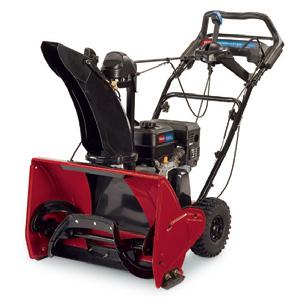
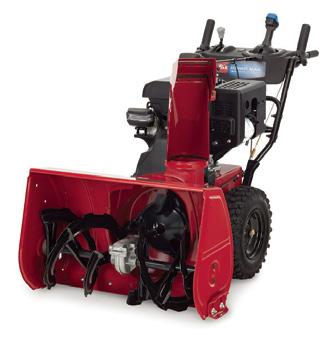





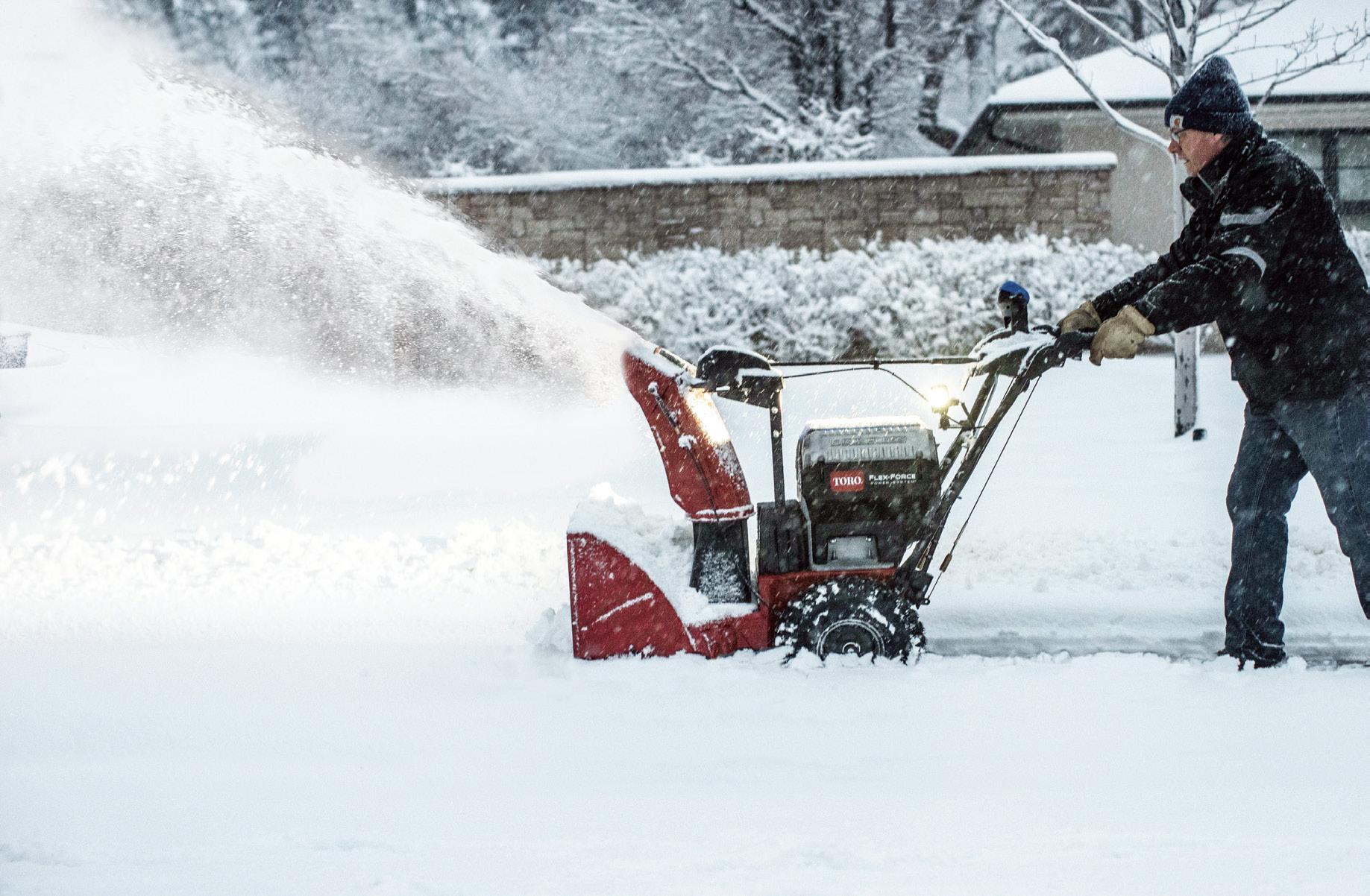
POWER CLEAR® 21” COMMERCIAL SINGLE-STAGE EXTENDED LIFE PADDLES AND REINFORCED HANDLE
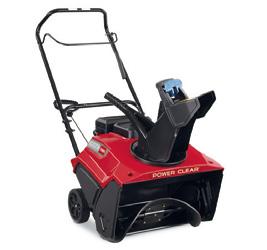
POWER MAX® HD
28” I 32” COMMERCIAL TWO-STAGE CAST IRON SKID PLATES AND DRIFT CUTTERS
GRANDSTAND®
MULTI FORCE™
WITH BOSS® 48” OR 60” SNOW BLADE,

GardenerNews.com 24 March 2023 S NOW B L O W E R BRAN D A M E R I C A S †
AMERICA’S NUMBER ONE SNOW BLOWER BRAND†
WHEN A NOR’EASTER ROARS IN, YOU NEED A BEAST OF A SNOW BLOWER TO ROAR BACK.
SNOW BLOWERS POWER MAX® HD 28” I 30” I 32” HEAVY-DUTY TWO-STAGE NIGHT VISION Your visibility will never be clearer with the LED headlight. POWER UP Optimal performance and years of dependable use with Toro Premium 4-cycle OHV engines. SNOWMASTER® 24” SNOW BLOWERS KEEP UP THE PACE You control your speed with the Personal Pace® Self-Propel System. LIGHTNING FAST Tear through snow and ice in record time with the powerful engineered auger. POWER CLEAR® 21” SINGLE-STAGE SNOW BLOWERS POWER TO BLAST SNOW All the power to break through heavy, wet snow in no time and throw it up to 40 feet. MORE ROOM FOR WHAT MATTERS Sleek, compact design for easy storage and quick use. AVAILABLE IN 60V BATTERY AND GAS Find Your Local Dealer at WWW.TORO.COM/DEALER TRIGGLERLESS STEERING Self-propelled, triggerless steering for smooth turns. (Select models) BUILT 2X STRONGER Hardened gears and no shear pins to break or replace in the cold. POWER MAX® 24” I 26” TWO-STAGE SNOW BLOWERS AVAILABLE IN 60V BATTERY AND GAS †Based on average Traqline unit share for snow blower market from 2013-March 2021. POWER SYSTE M ® POWER SYSTE M NEW! BATTERY POWERED †Based on average Traqline unit share for snow blower market from 2013-March 2021.
COMMERCIAL

















































































